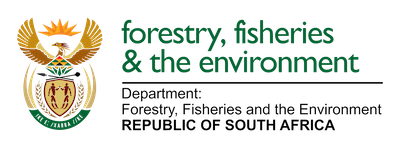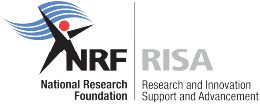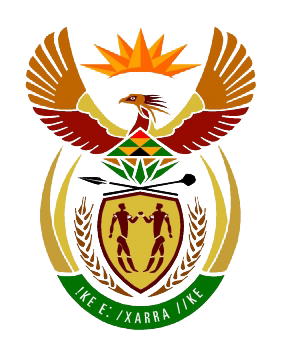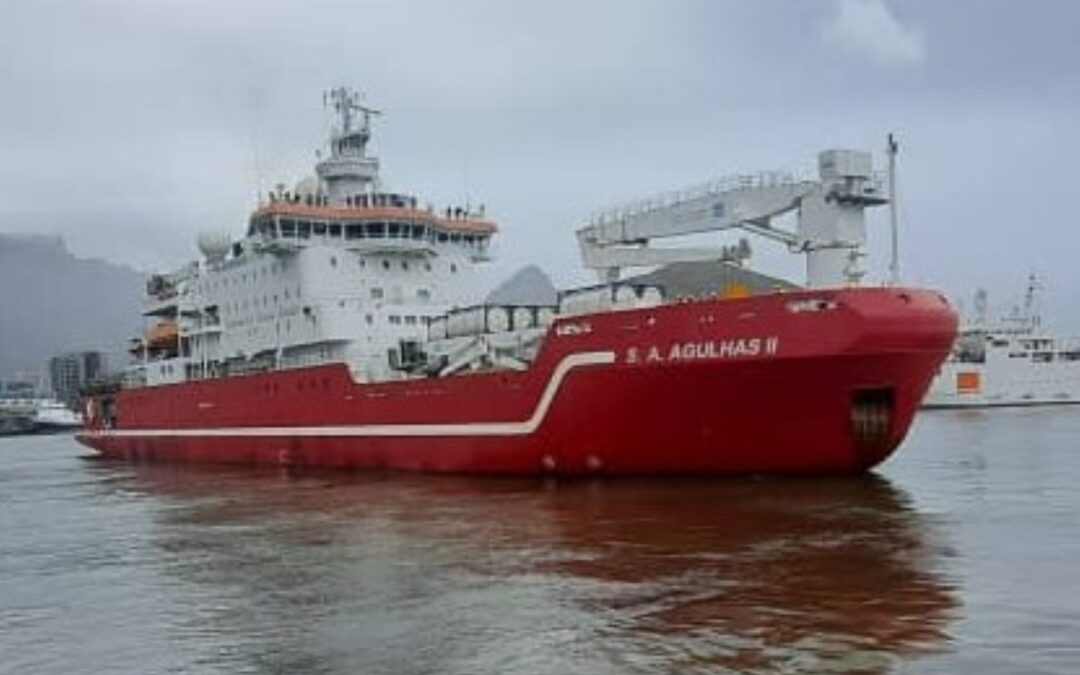
by Ria Olivier | Dec 17, 2024 | Antarctica, SA Agulhas II, SANAE, Take-Over Operations
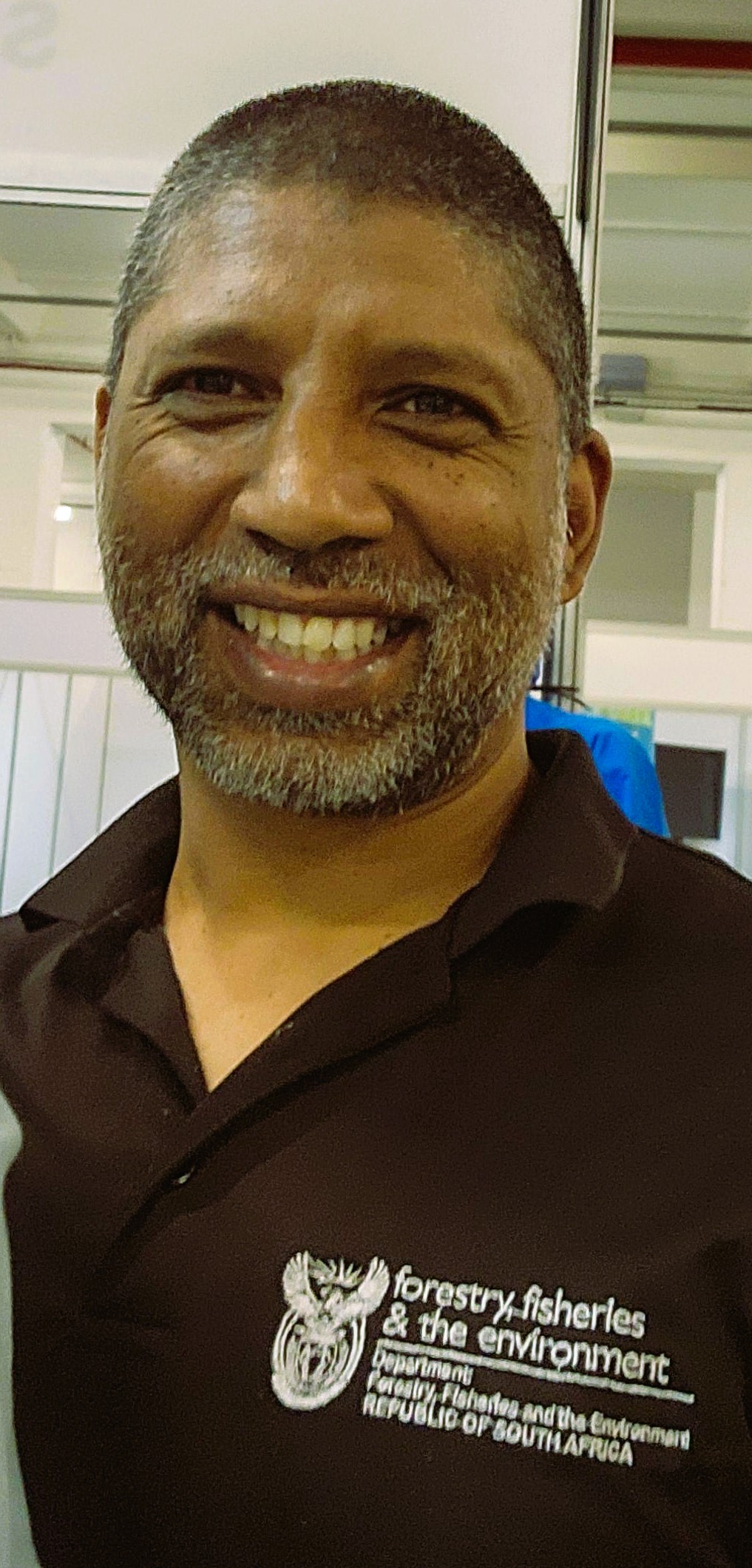 Every year, the South African vessel, the SA Agulhas II, embarks on a journey to Antarctica, marking the beginning of its annual research and supply voyage. This critical mission is not only a symbol of South Africa’s dedication to scientific research but also a lifeline for the overwintering team, personnel rotations, and vital logistical support for stations on the frozen continent. On the 15th of December, the SA Agulhas II departed from Cape Town, South Africa, bound for Antarctica. This voyage marks the commencement of a multifaceted operation, which encompasses research, supply deliveries, and personnel exchanges between Antarctica and the rest of the world. Left: Shiraan Watson DCO of DFFE
Every year, the South African vessel, the SA Agulhas II, embarks on a journey to Antarctica, marking the beginning of its annual research and supply voyage. This critical mission is not only a symbol of South Africa’s dedication to scientific research but also a lifeline for the overwintering team, personnel rotations, and vital logistical support for stations on the frozen continent. On the 15th of December, the SA Agulhas II departed from Cape Town, South Africa, bound for Antarctica. This voyage marks the commencement of a multifaceted operation, which encompasses research, supply deliveries, and personnel exchanges between Antarctica and the rest of the world. Left: Shiraan Watson DCO of DFFE
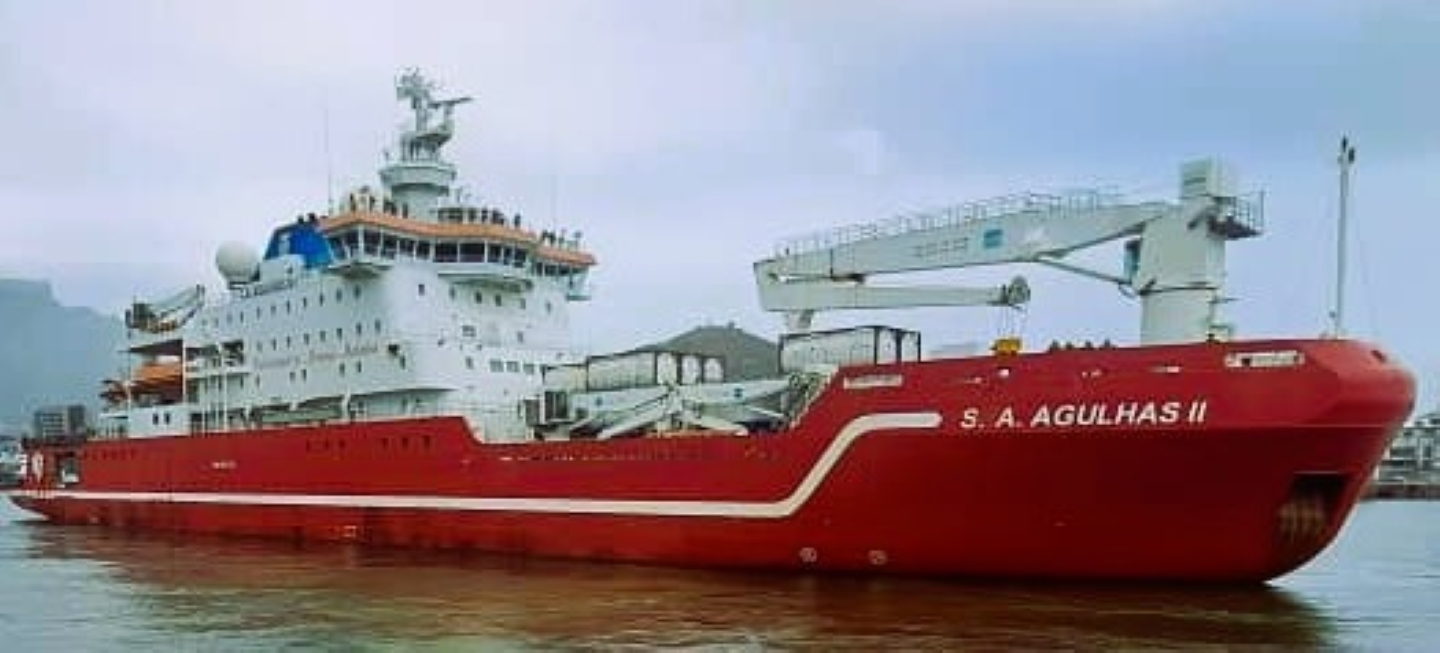 The SA Agulhas II plays a pivotal role in supporting research and exploration in one of the most extreme and least understood environments on Earth. South Africa’s station in Antarctica, SANAE IV Station, rely on the vessel’s annual voyages for everything from scientific supplies to food, equipment, and fuel. The vessel also delivers critical scientific personnel, scientists, and engineers who are essential for conducting experiments, research, and environmental monitoring on the frozen continent.
The SA Agulhas II plays a pivotal role in supporting research and exploration in one of the most extreme and least understood environments on Earth. South Africa’s station in Antarctica, SANAE IV Station, rely on the vessel’s annual voyages for everything from scientific supplies to food, equipment, and fuel. The vessel also delivers critical scientific personnel, scientists, and engineers who are essential for conducting experiments, research, and environmental monitoring on the frozen continent.
This year, the SA Agulhas II will carry a group of researchers to continue studies on climate change, marine biology, and glaciology, among other fields. Another essential aspect of this annual journey is the personnel exchange that occurs as part of the overwintering team rotation. The team that has spent the harsh winter months at the research stations in Antarctica will return home, while a new team will take their place for the upcoming year.
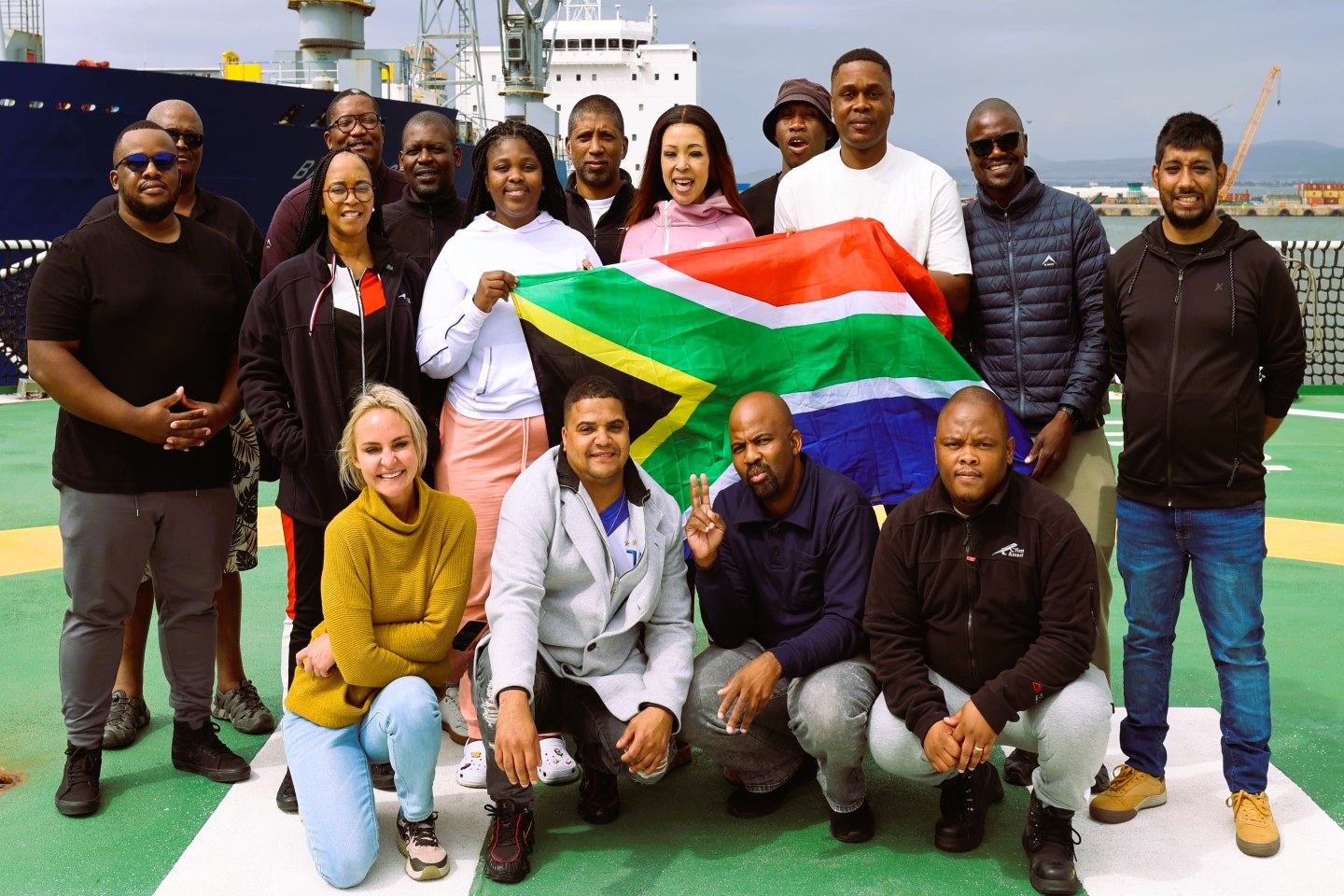 Above: SANAE64 Overwintering Team with DFFE Takeover Personnel.
Above: SANAE64 Overwintering Team with DFFE Takeover Personnel.
The overwintering teams are a group of exceptional individuals who endure the Antarctic winter—a period marked by freezing temperatures, months of darkness, and isolation. They are responsible for maintaining research stations, conducting experiments, and ensuring that the infrastructure is operational during the harshest months. The rotation ensures that the same team does not endure multiple seasons of isolation and provides an opportunity for fresh perspectives and new expertise.
The SA Agulhas II is not just a research vessel—it’s a symbol of South Africa’s commitment to the exploration of one of the most remote places on Earth. The vessel’s crew is tasked with navigating the seas and icy waters that surround Antarctica, with the ship braving some of the world’s roughest weather and icy waters. The crew ensures the vessel stays operational throughout the voyage, providing safety and support to everyone on board. This year, as always, the vessel crew will work tirelessly to ensure that all operations go smoothly. They will transport cargo, assist scientists with their research, and ensure the safe arrival and departure of personnel.
We wish the SA Agulhas II, its crew, the overwintering team, and all personnel embarking on this important voyage a safe and successful journey to the frozen south.
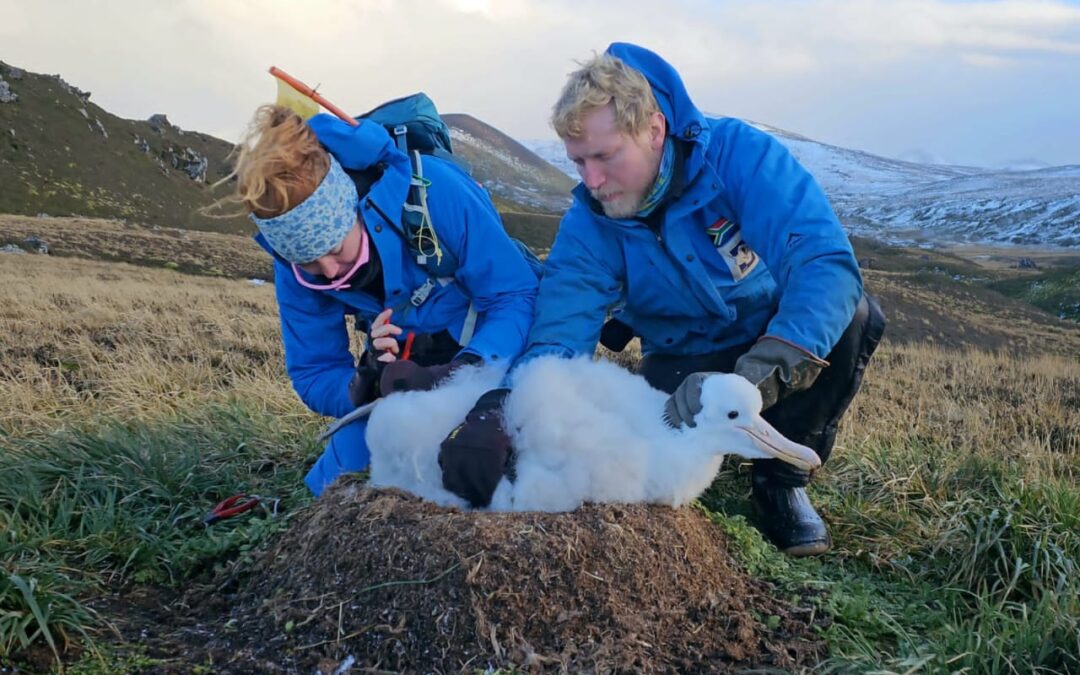
by Ria Olivier | Apr 29, 2024 | Marion Island, Research, Take-Over Operations, Uncategorised
Marion Island Take-Over 2024 Ornithology Projects: Avian scavengers as indicators of recovery of an island biota and the FitzPatrick long-term monitoring of Albatross and Giant Petrels.
The activities during the take-over 2024 will be divided into (1) completing the activities of the 2021/23 SANAP project on avian scavengers, and (2) ensuring the smooth passing of the FitzPatrick Institute seabird long-term monitoring on to the South African Polar Research Infrastructure (SAPRI).
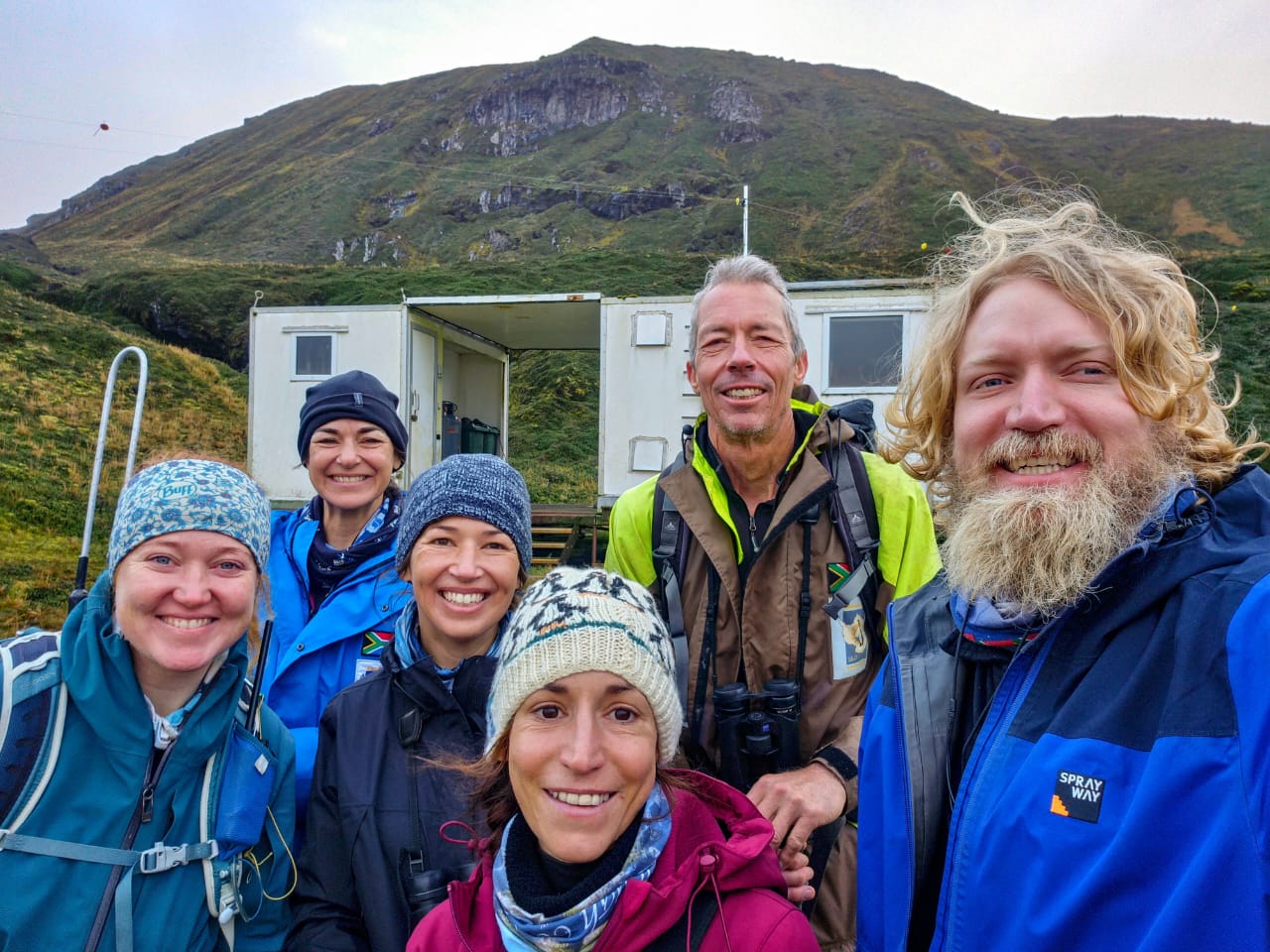 ABOVE: Michelle Jones (M80), Vanessa Steven (M81), Prof Susie Cunningham (UCT FitzPatrick PI), Rhiannon Gill (M81), Prof Peter Ryan (UCT FitzPatrick), Chris Jones (M80)
ABOVE: Michelle Jones (M80), Vanessa Steven (M81), Prof Susie Cunningham (UCT FitzPatrick PI), Rhiannon Gill (M81), Prof Peter Ryan (UCT FitzPatrick), Chris Jones (M80)
Avian scavengers as indicators of recovery of an island biota : Since 2021, our SANAP project focussed on the three poorly known avian scavengers: Brown Skua, Kelp Gull, Black-faced Sheathbill, as well as some of the skua’s prey, the burrowing seabird species. Our project filled identified scientific gaps that were crucial for best planning of the mouse eradication and development of appropriate mitigation measures, and established baselines for the scavenger guild and their prey base against which the impact of a successful mouse eradication can be measured in years to come. The takeover 2024 will see the closure of this project that we are aiming to restart at the time of the mouse eradication.
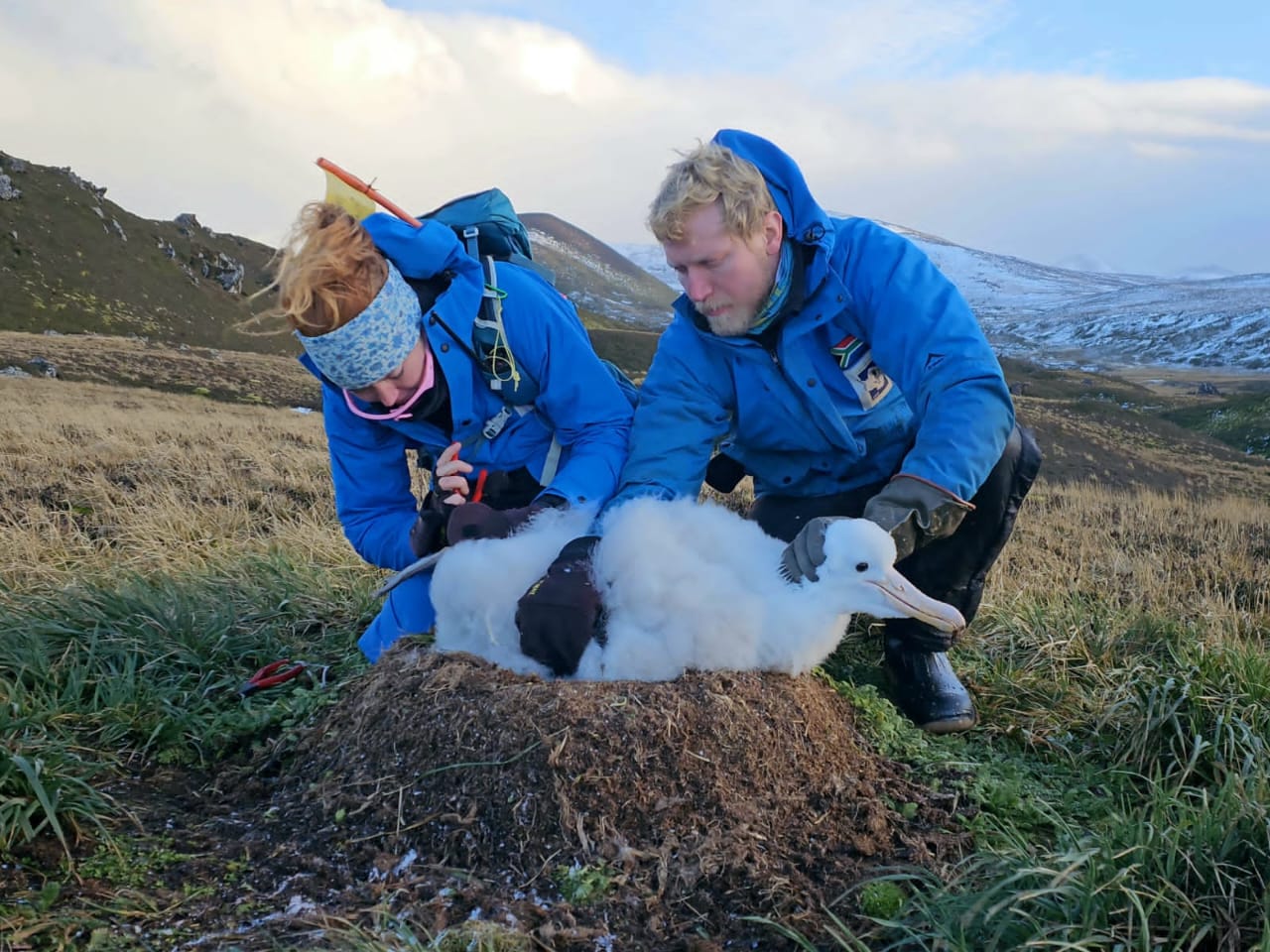
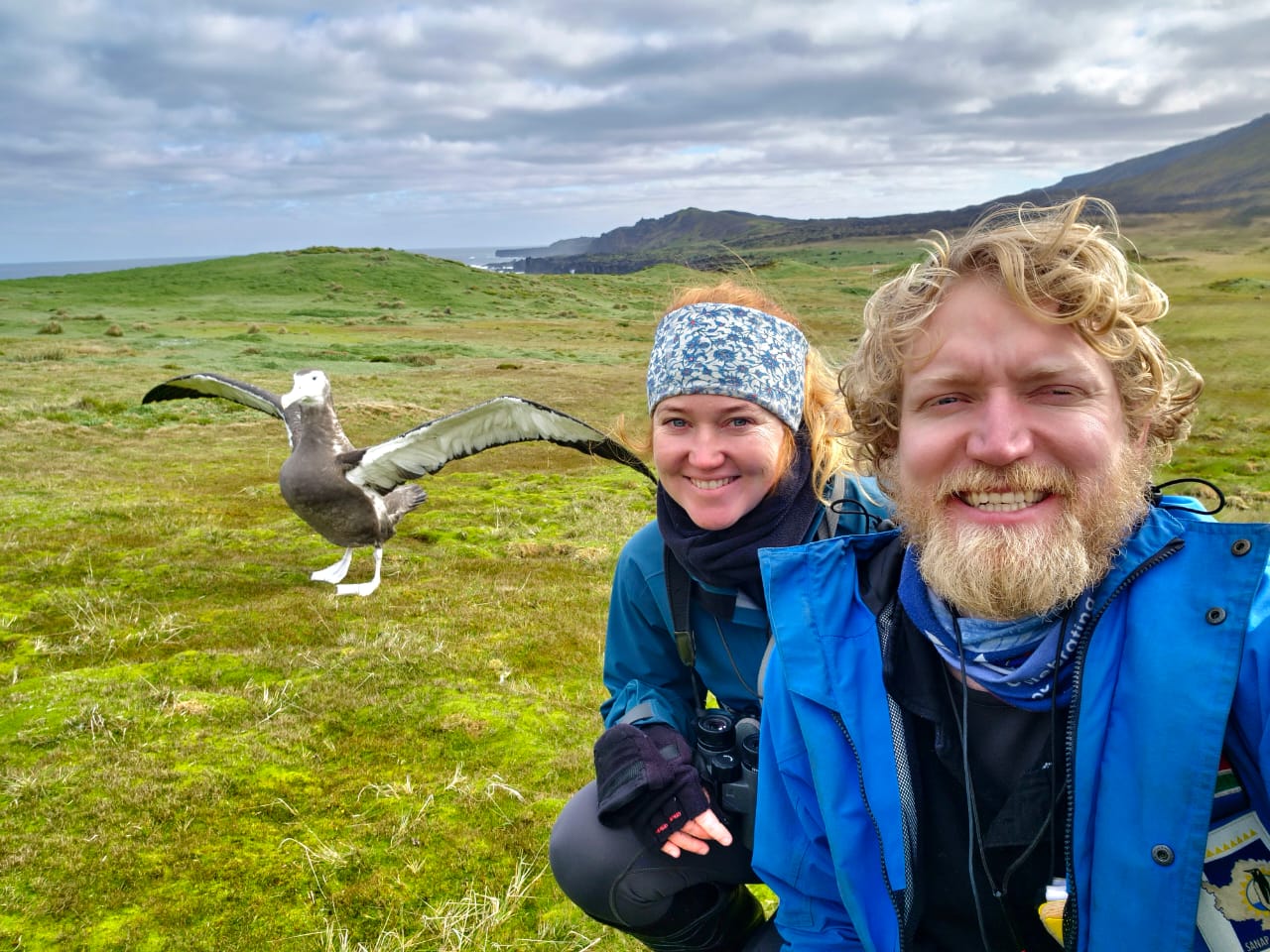 Above: Chris and Michelle Jones working with the Wandering Albatross during overwinter period
Above: Chris and Michelle Jones working with the Wandering Albatross during overwinter period
The FitzPatrick long-term monitoring of Albatross and Giant Petrels: The long-term demography monitoring of Wandering and Grey-headed Albatrosses and Northern Giant Petrels at Marion Island was started by the FitzPatrick Institute of African Ornithology (UCT) in the early 1980s. To ensure its continuity for years to come, it will become SAPRI’s responsibility from April/May 2024. In the forthcoming takeover, all information regarding the monitoring will be passed on to SAPRI to ensure the continuity in the data collected. Further, the annual whole island count of Grey-headed Albatross fledglings will be conducted and Wandering Albatrosses will be carefully checked to detect any potential mouse injuries that were first detected in breeding adults in April 2023.
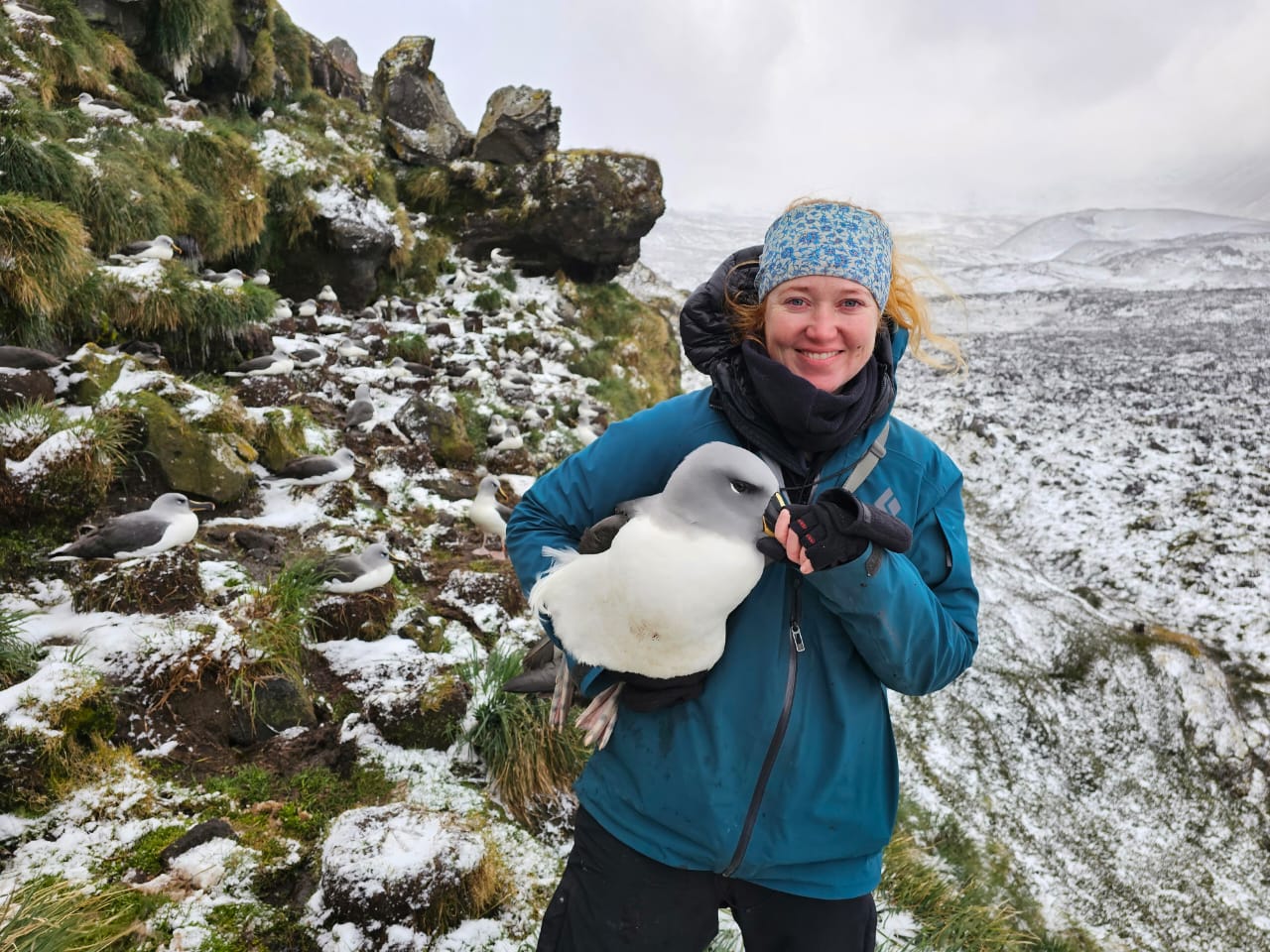
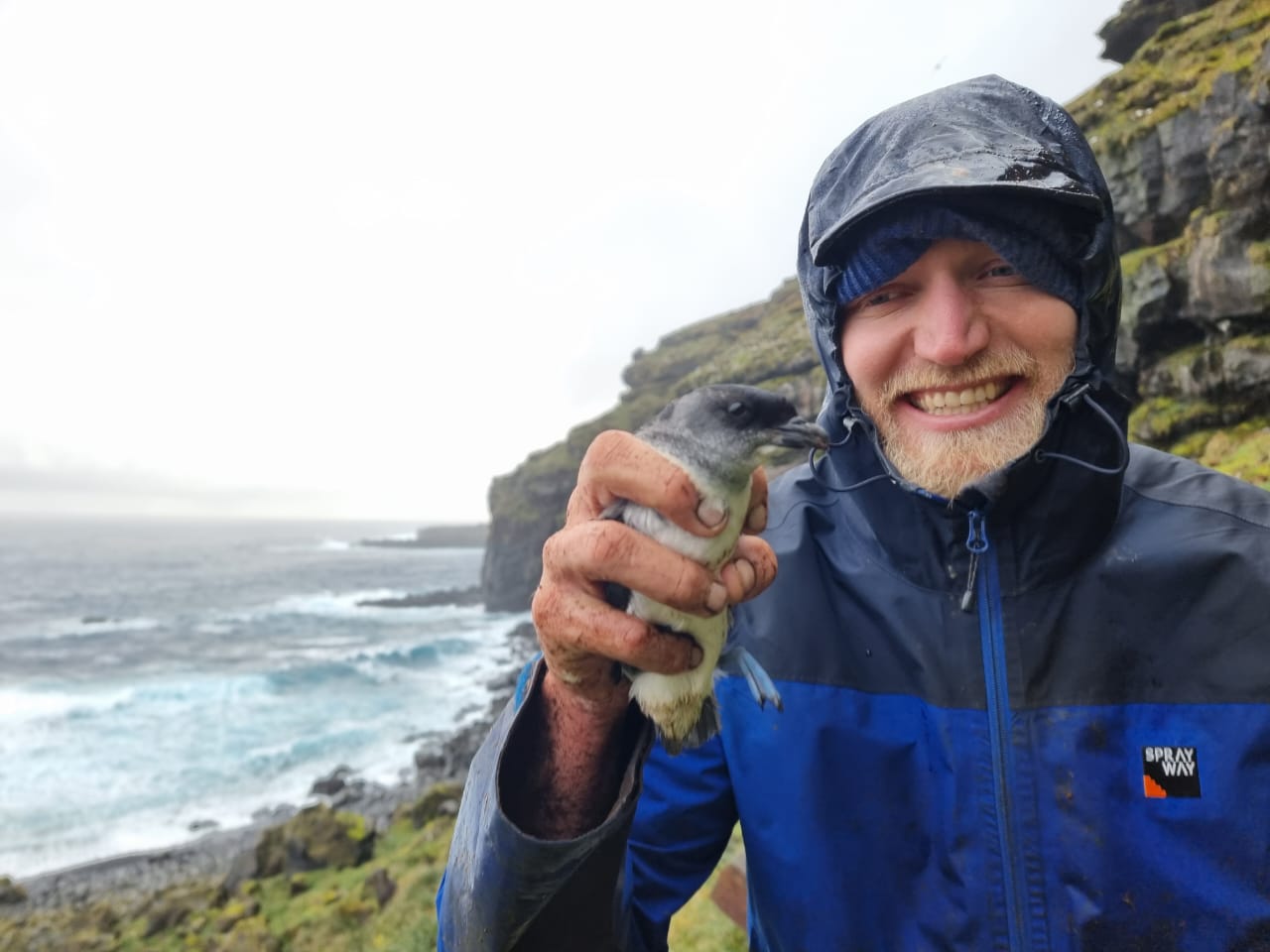 (left) Michelle Jones with Grey-headed Albatross and (right) Chris Jones with Common Diving Petrel
(left) Michelle Jones with Grey-headed Albatross and (right) Chris Jones with Common Diving Petrel
Principal Investigators
Take-Over Research team
Overwintering team 2023/24:
- Michelle Risi Jones (NMU/SAPRI)
- Christopher Jones (NMU)
- Text: Dr Maelle Connan
- Images : Chris and Michelle Jones
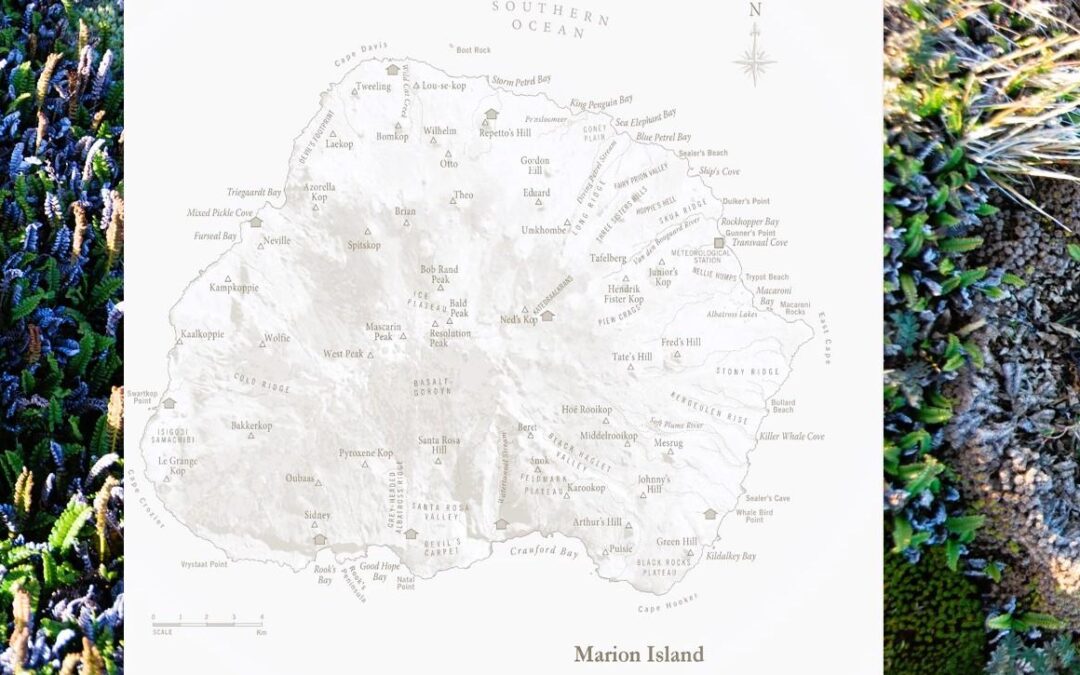
by Ria Olivier | Apr 24, 2024 | Biosecurity, Ecology, Marion Island, Mice Eradication, Take-Over Operations
The Marion Island mouSe Ecology (MISE) Project: Towards a comprehensive understanding of impacts of the invasive house mouse on the terrestrial biodiversity of Marion Island
 (Above: Azorella selago – left: intact, right: eaten by mice)
(Above: Azorella selago – left: intact, right: eaten by mice)
This SANAP-funded project will set out to model the terrestrial food web on Marion Island, with a specific focus of understanding the role of the the invasive house mouse (Mus musculus), on the biodiversity and ecosystem functioning of Marion Island. The house mouse is an apex terrestrial predator on the island, i.e. it has few to no natural predators, but probably has a major effect on organisms on the island from across the food chain. This exercise is of utmost importance because the house mouse has detrimental effects on a large percentage of species on the island, ranging from seabirds to plants and macroinvertebrates; yet, some of these impacts are not well understood. Also, mouse eradication is planned for Marion Island in 2025. Only if we know what the current impact of mice are on the Marion Island ecosystem, can we predict the efficacy of the eradication..
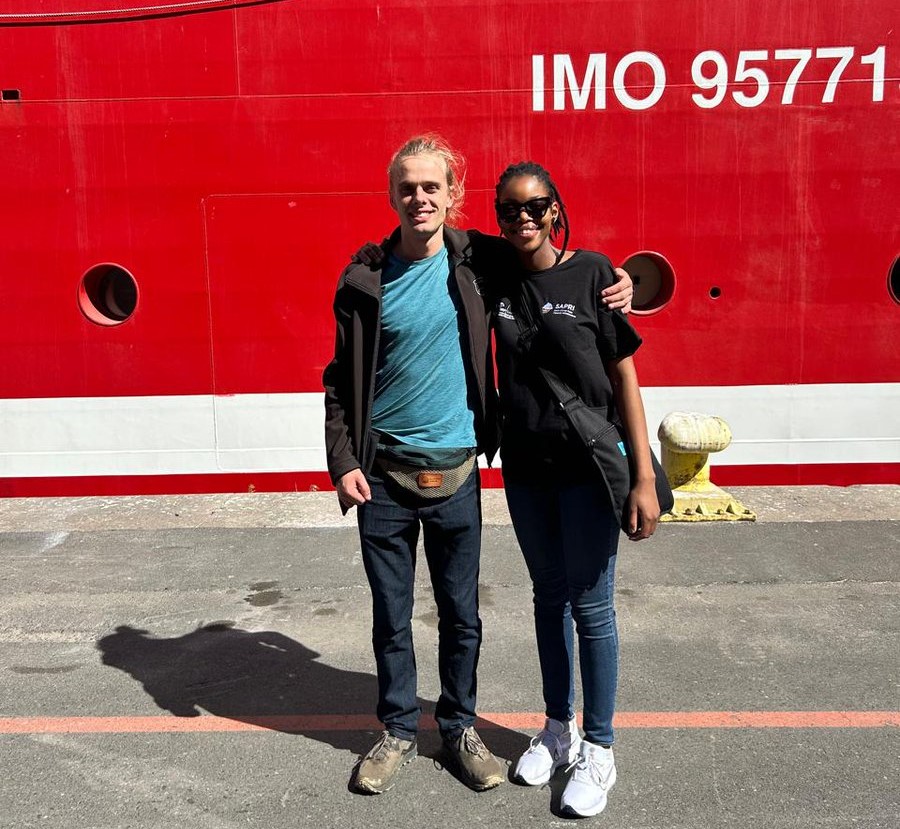
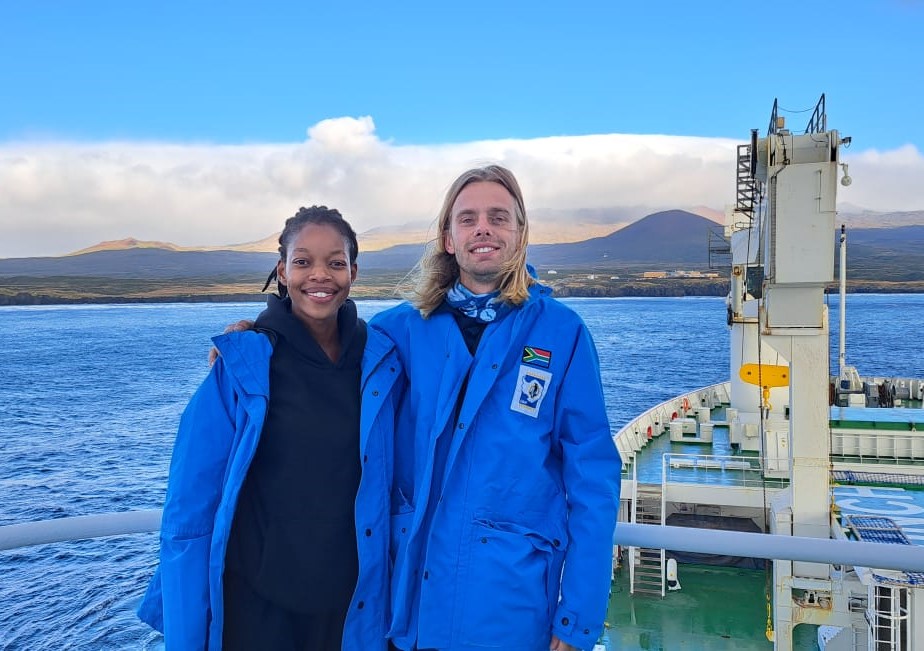 (Above: Elmar van Rooyen and Rabia Mathakutha. Left: before departure. Right: On board S.A.Agulhas II with Marion Island in the back)
(Above: Elmar van Rooyen and Rabia Mathakutha. Left: before departure. Right: On board S.A.Agulhas II with Marion Island in the back)
A major aim in the coming year will be to assess plant seed herbivory by mice, to see how this may have affected vegetation dynamics, and how mouse removal may affect vegetation dynamics; and also to understand current levels of invertebrate biomass on Marion Island. Invertebrates make up a major portion of the mouse diet, and repeat sampling since the 1970s has shown successive decreases in biomass. We will also be collecting data for isotope analyses to understand the food web on Marion Island in order to predict knock-on effects of mouse eradication and predict ecosystem recovery. Finally, we will be continuing long-term monitoring programmes of plants and invertebrates that were recently started, and also conduct some repeat sampling of protocols that were conducted some decades ago in order to assess how the system has changed in the last decades.
- Principal Investigator: Michelle Greve
- Affiliation: Department of Plant and Soil Sciences, University of Pretoria
- Research Programme: Towards a comprehensive understanding of impacts of the invasive house mouse on the terrestrial biodiversity of Marion Island
- Participants:
Marion 81 Overwintering Team: Elmar van Rooyen (University of Pretoria – UP)
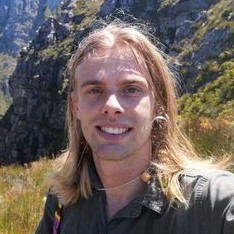 Allow me to introduce myself briefly. I am a 29-year-old conservation ecologist with a profound passion for nature and exploration. I hold an M.Sc. degree in Conservation Ecology & Entomology and possess a diverse skill set that includes expertise in ecology, restoration ecology, horticulture, botany, entomology, education, and management. Throughout my career, my focus has predominantly been on Southern Afrotemperate forests, and I have accumulated significant experience in South African forest ecology. I am drawn to this expedition for several reasons. Foremost, the opportunity to explore the unique environment of Marion Island presents a once-in-a-lifetime chance for me to expand my knowledge and understanding of sub-Antarctic ecosystems. While I may not have prior experience with the island, I firmly believe that firsthand experience is the most effective way to comprehend its ecology and wildlife. Moreover, I am deeply committed to the conservation of natural habitats, and Marion Island’s status as a biodiversity hotspot underscores the urgency of our research efforts. The presence of invasive house mice poses a significant threat to the island’s flora and fauna, necessitating thorough investigation and potential eradication strategies. Additionally, I am eager to contribute to studies on the impact of alien plant species and assist in devising methods for their control. I have always had a profound appreciation for fieldwork, and I relish the opportunity to immerse myself in hands-on research once again. Marion Island’s rugged terrain and unique challenges excite me, and I am prepared to tackle them head-on in the pursuit of conservation objectives.
Allow me to introduce myself briefly. I am a 29-year-old conservation ecologist with a profound passion for nature and exploration. I hold an M.Sc. degree in Conservation Ecology & Entomology and possess a diverse skill set that includes expertise in ecology, restoration ecology, horticulture, botany, entomology, education, and management. Throughout my career, my focus has predominantly been on Southern Afrotemperate forests, and I have accumulated significant experience in South African forest ecology. I am drawn to this expedition for several reasons. Foremost, the opportunity to explore the unique environment of Marion Island presents a once-in-a-lifetime chance for me to expand my knowledge and understanding of sub-Antarctic ecosystems. While I may not have prior experience with the island, I firmly believe that firsthand experience is the most effective way to comprehend its ecology and wildlife. Moreover, I am deeply committed to the conservation of natural habitats, and Marion Island’s status as a biodiversity hotspot underscores the urgency of our research efforts. The presence of invasive house mice poses a significant threat to the island’s flora and fauna, necessitating thorough investigation and potential eradication strategies. Additionally, I am eager to contribute to studies on the impact of alien plant species and assist in devising methods for their control. I have always had a profound appreciation for fieldwork, and I relish the opportunity to immerse myself in hands-on research once again. Marion Island’s rugged terrain and unique challenges excite me, and I am prepared to tackle them head-on in the pursuit of conservation objectives.
Marion Takeover 2024: Rabia Mathakutha (South African Polar Research Infrastructure -SAPRI)
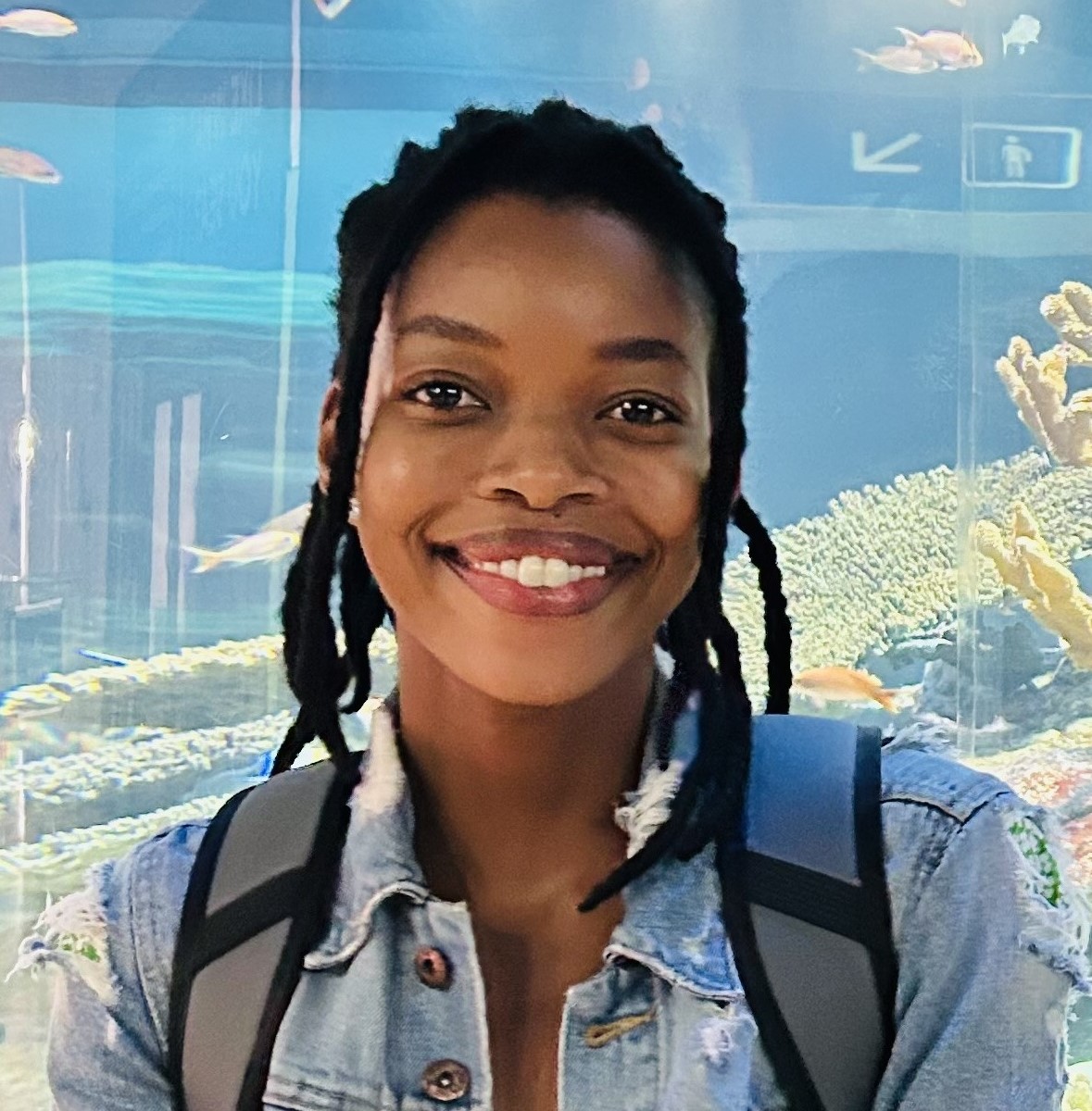 Rabia is excited to participate in the 2024 Marion Island Relief Expedition. Rabia is an ecologist by training and will be working as part of the University of Pretoria research team towards a comprehensive understanding of impacts of the invasive house mouse on the terrestrial biodiversity of Marion Island. Rabia first visited the island as part of her Masters research project during the 2015 and 2016 relief expeditions. Rabia’s MSc in Plant Science was focused on understanding plant invasion potential and environmental change responses in the sub-Antarctic region, using Marion Island as a case study. This is when her passion for understanding and participating in the conservation of South Africa’s polar environment was ignited. In her current capacity, Rabia is a research coordinator for the Data, Products and Society (DPS) Integrated Facility of the South African Polar Research Infrastructure (SAPRI). She continues to support the polar research environment by ensuring coordinated access to research infrastructure and societal benefits through science engagement and science communication. Rabia views this chance to revisit the island as a once-in-a-lifetime opportunity, one that will not only build upon previous efforts in understanding plant dynamics but also advance our understanding of ecological processes in response to a threatening invader. There’s no better place to study this than Marion Island, our own natural laboratory, and where it’s most urgently needed. As part of the larger Mouse-Free Marion project, Rabia considers this as a significant contribution to global conservation efforts, and in her words, “saving the world!”.
Rabia is excited to participate in the 2024 Marion Island Relief Expedition. Rabia is an ecologist by training and will be working as part of the University of Pretoria research team towards a comprehensive understanding of impacts of the invasive house mouse on the terrestrial biodiversity of Marion Island. Rabia first visited the island as part of her Masters research project during the 2015 and 2016 relief expeditions. Rabia’s MSc in Plant Science was focused on understanding plant invasion potential and environmental change responses in the sub-Antarctic region, using Marion Island as a case study. This is when her passion for understanding and participating in the conservation of South Africa’s polar environment was ignited. In her current capacity, Rabia is a research coordinator for the Data, Products and Society (DPS) Integrated Facility of the South African Polar Research Infrastructure (SAPRI). She continues to support the polar research environment by ensuring coordinated access to research infrastructure and societal benefits through science engagement and science communication. Rabia views this chance to revisit the island as a once-in-a-lifetime opportunity, one that will not only build upon previous efforts in understanding plant dynamics but also advance our understanding of ecological processes in response to a threatening invader. There’s no better place to study this than Marion Island, our own natural laboratory, and where it’s most urgently needed. As part of the larger Mouse-Free Marion project, Rabia considers this as a significant contribution to global conservation efforts, and in her words, “saving the world!”.
Text and images by MISE.
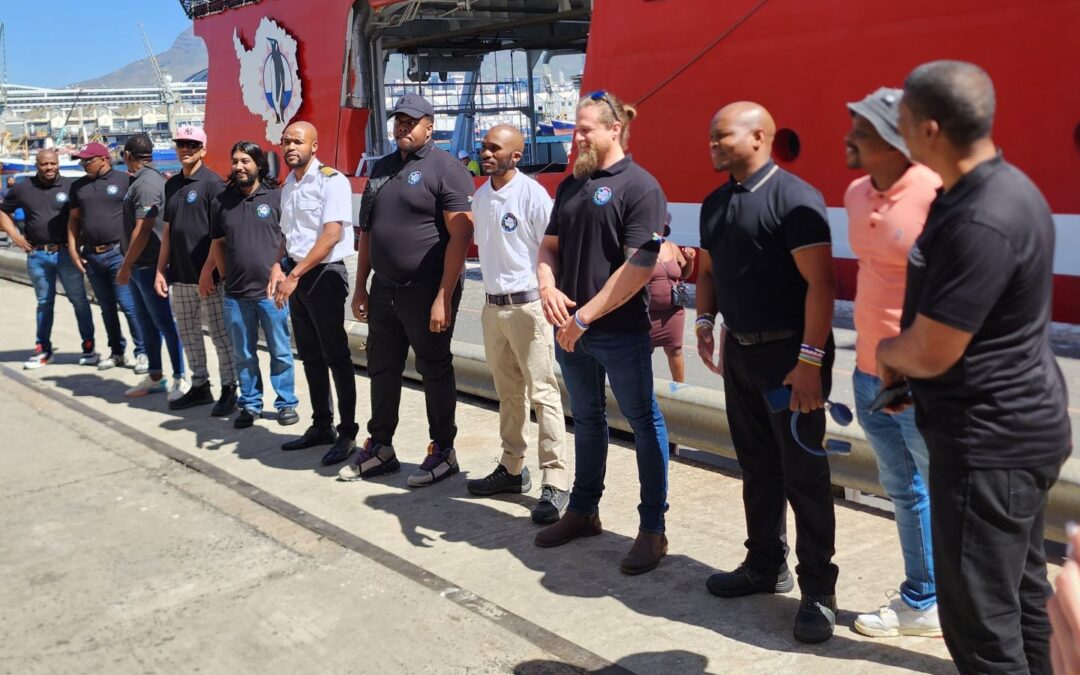
by Ria Olivier | Feb 21, 2024 | Antarctica, Marion Island, Overwintering Team, SA Agulhas II, SANAE IV, SANAP, Stations, Take-Over Operations
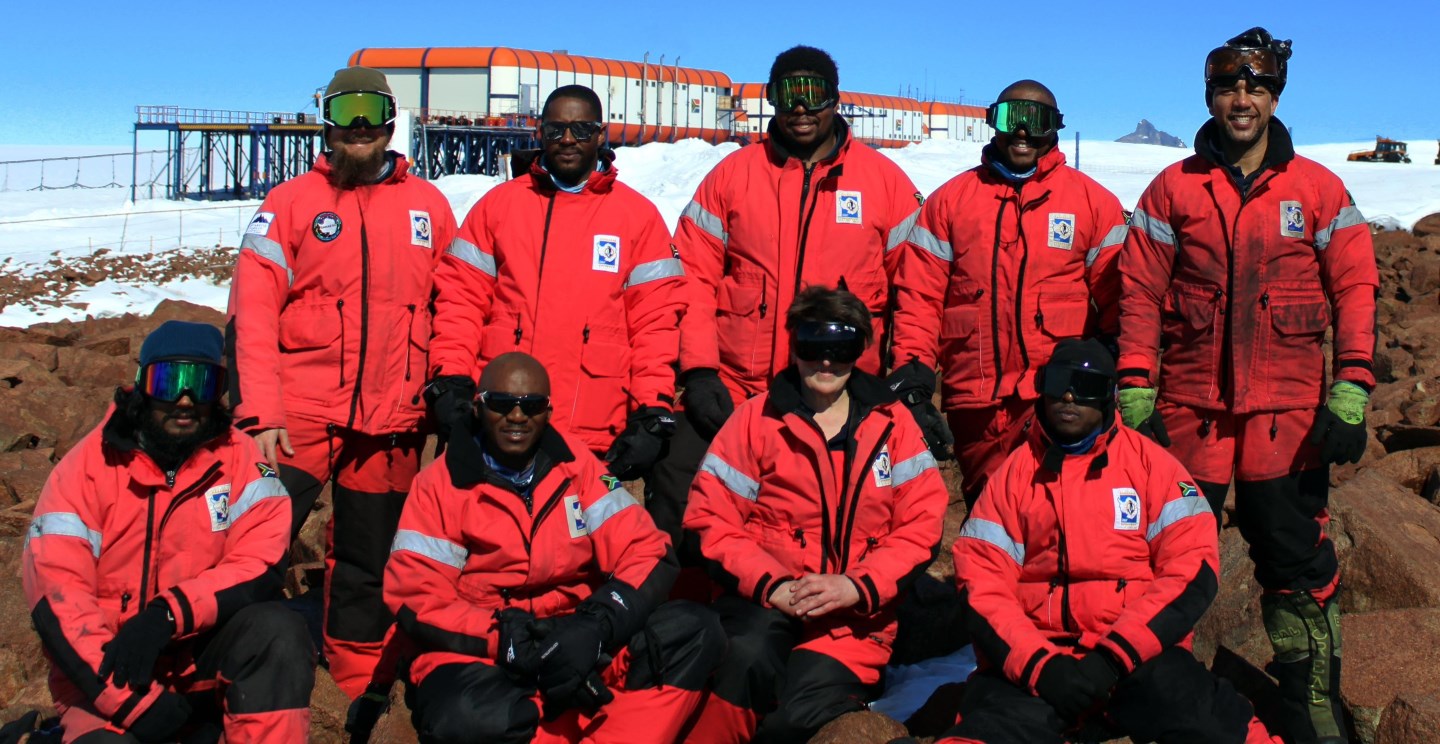 It was a great event to welcome back the SANAE62 overwintering team after they spent more than a year at Antarctica. Dr Aby Paton(front 3rd form left), medical doctor of the team did not return as she will be staying on at SANAEIV as team leader and medical doctor for SANAE63.
It was a great event to welcome back the SANAE62 overwintering team after they spent more than a year at Antarctica. Dr Aby Paton(front 3rd form left), medical doctor of the team did not return as she will be staying on at SANAEIV as team leader and medical doctor for SANAE63.
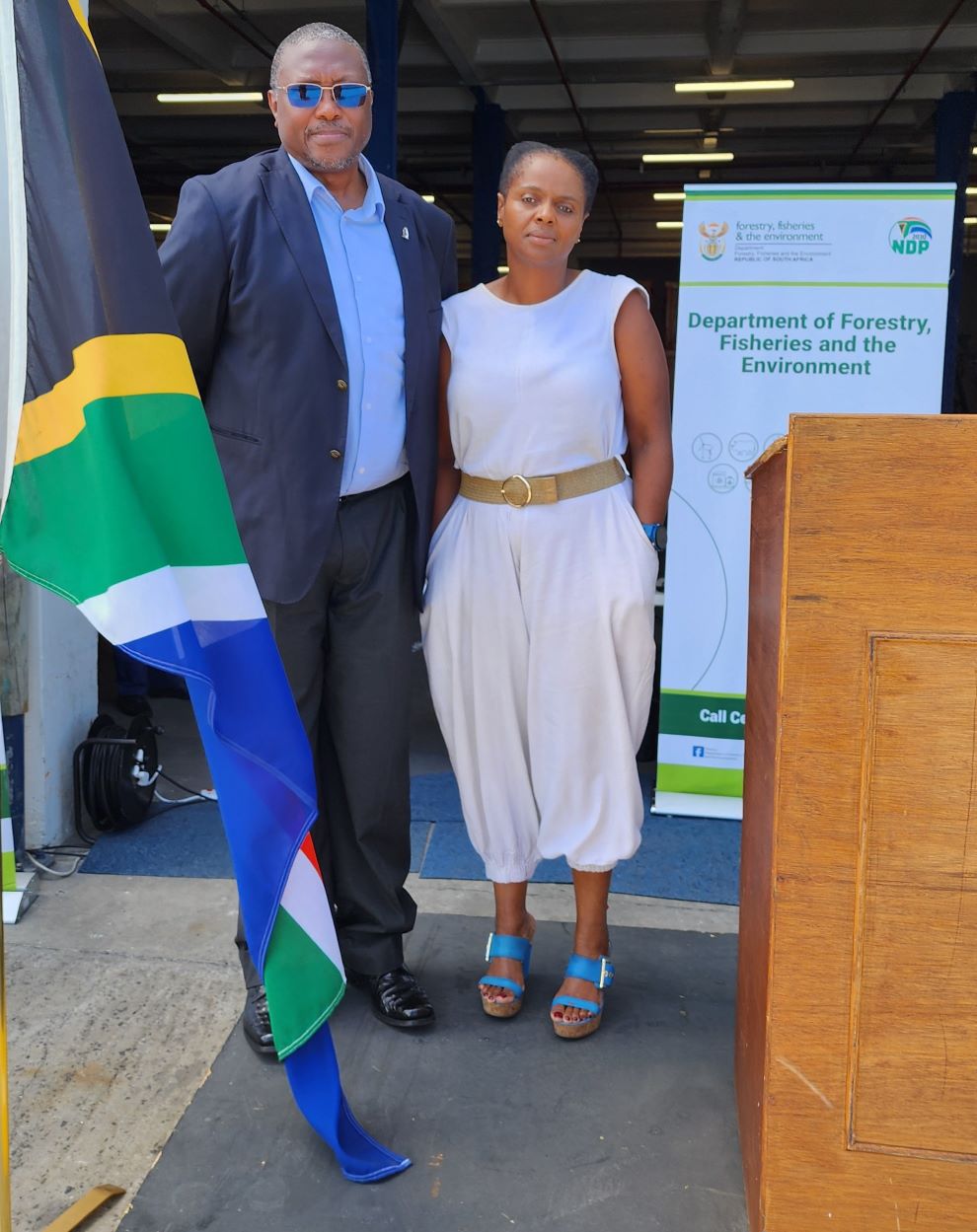
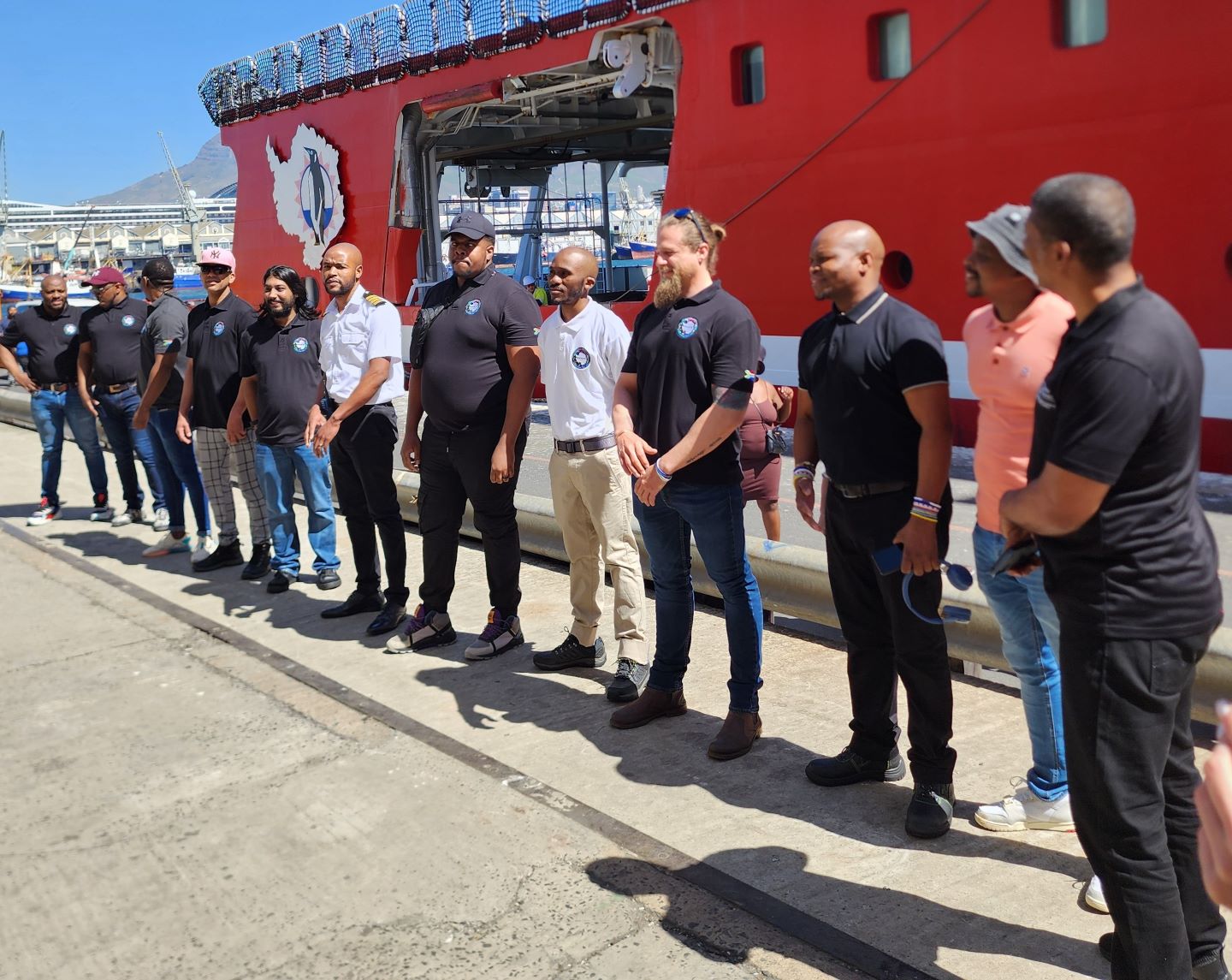 The event was organised by Ms Chuma Phamoli, Director of Antarctic and Southern Oceans Islands Support. Dr L Fikizolo, Deputy Director of Oceans and Coasts, gave the welcome speech and thanked everyone on the voyage for their dedication and hard work to make the take over period successful. “This was the first season that the vessel had cover two destinations (Antarctica and Marion Island) on both the out bound and in bound legs of the voyage. The voyage also gave the Department of Public Works and Infrastructure (DPWI) the necessary platform to undertake their annual maintenance activities at the SANAE IV base and the removal of old infrastructure on Marion Island.” – DFFE
The event was organised by Ms Chuma Phamoli, Director of Antarctic and Southern Oceans Islands Support. Dr L Fikizolo, Deputy Director of Oceans and Coasts, gave the welcome speech and thanked everyone on the voyage for their dedication and hard work to make the take over period successful. “This was the first season that the vessel had cover two destinations (Antarctica and Marion Island) on both the out bound and in bound legs of the voyage. The voyage also gave the Department of Public Works and Infrastructure (DPWI) the necessary platform to undertake their annual maintenance activities at the SANAE IV base and the removal of old infrastructure on Marion Island.” – DFFE
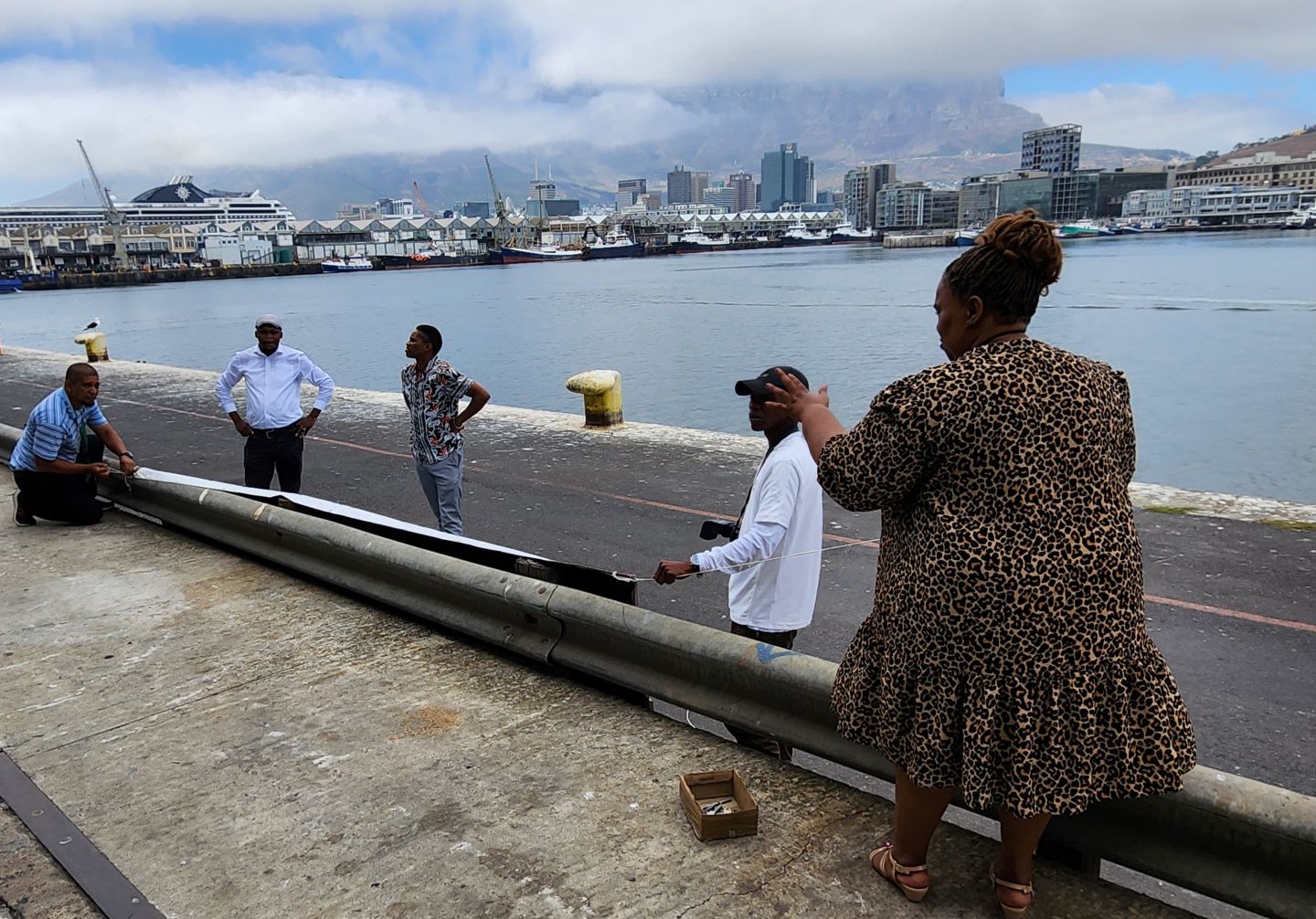
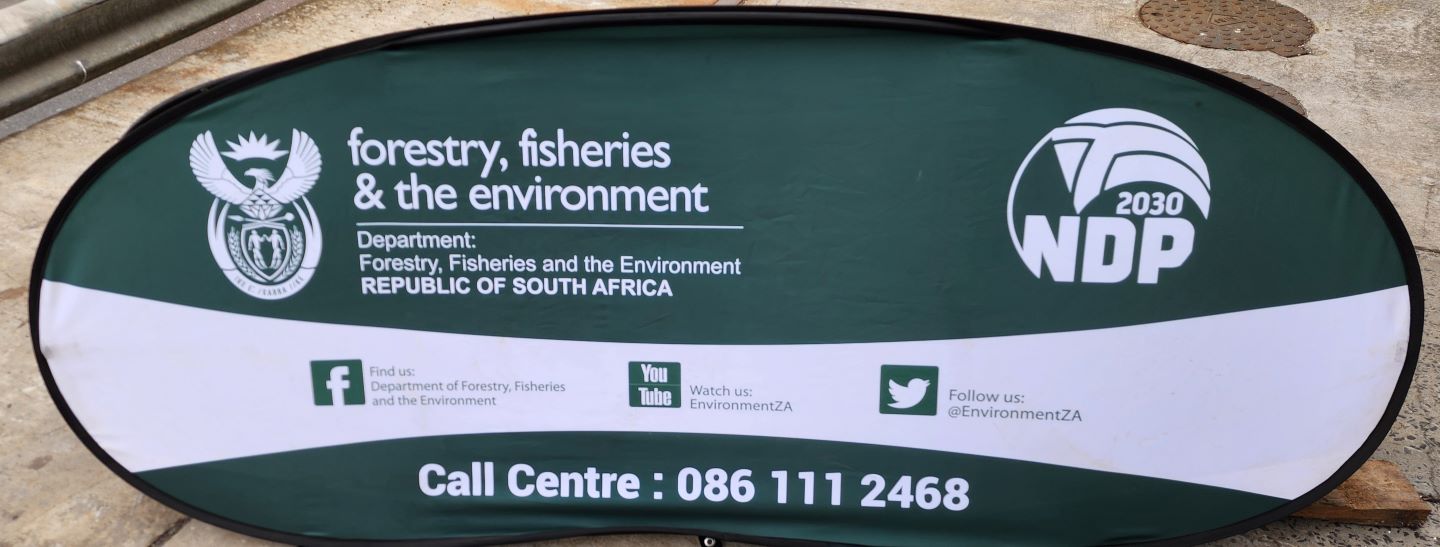
 DFFE preparations for welcoming ceremony(image left). Zaid Watson and Mawonga Mandleni provided entertainment while everyone was waiting (image right)
DFFE preparations for welcoming ceremony(image left). Zaid Watson and Mawonga Mandleni provided entertainment while everyone was waiting (image right)
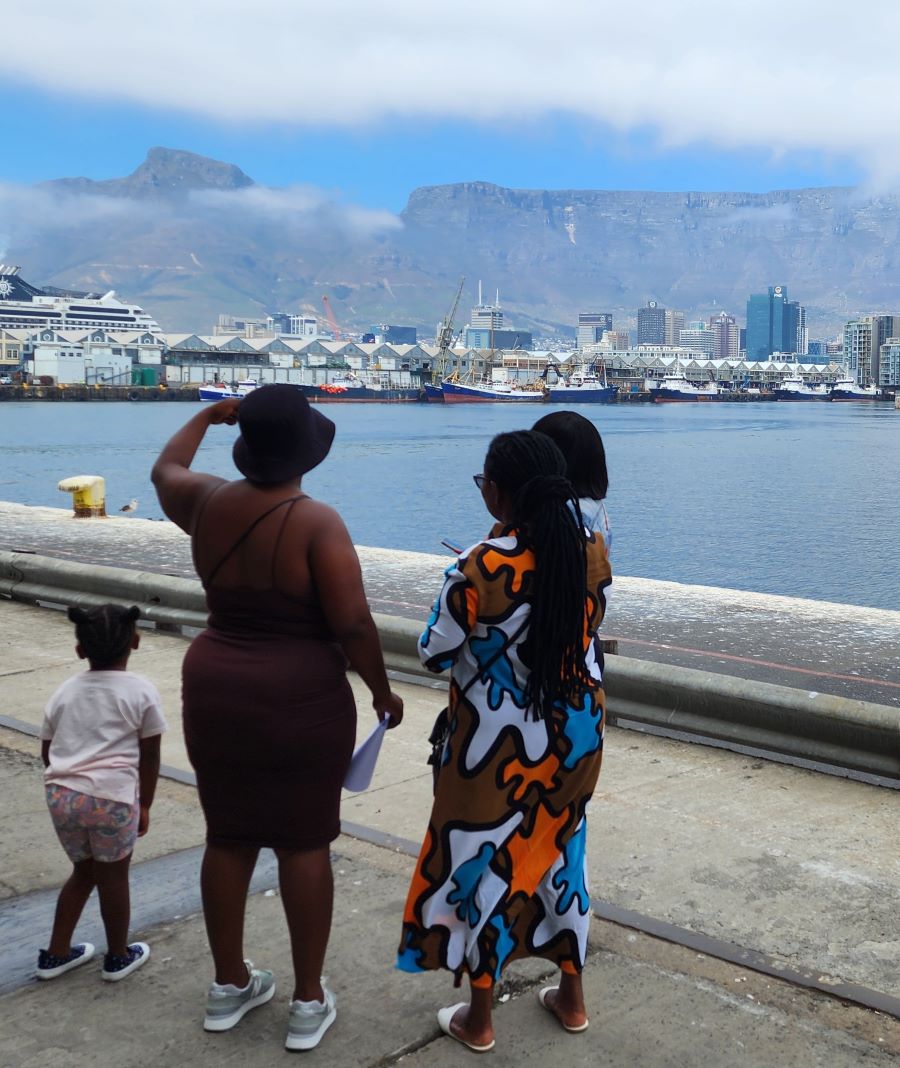
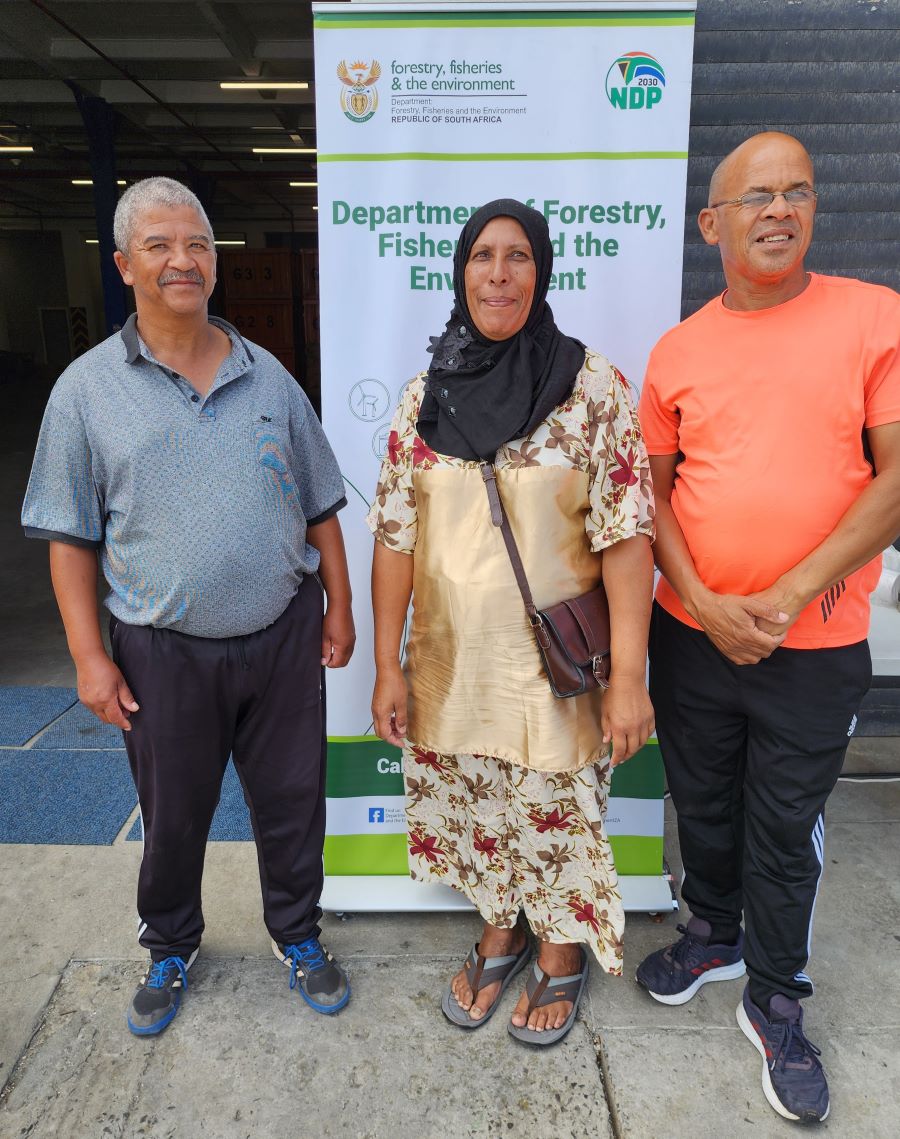
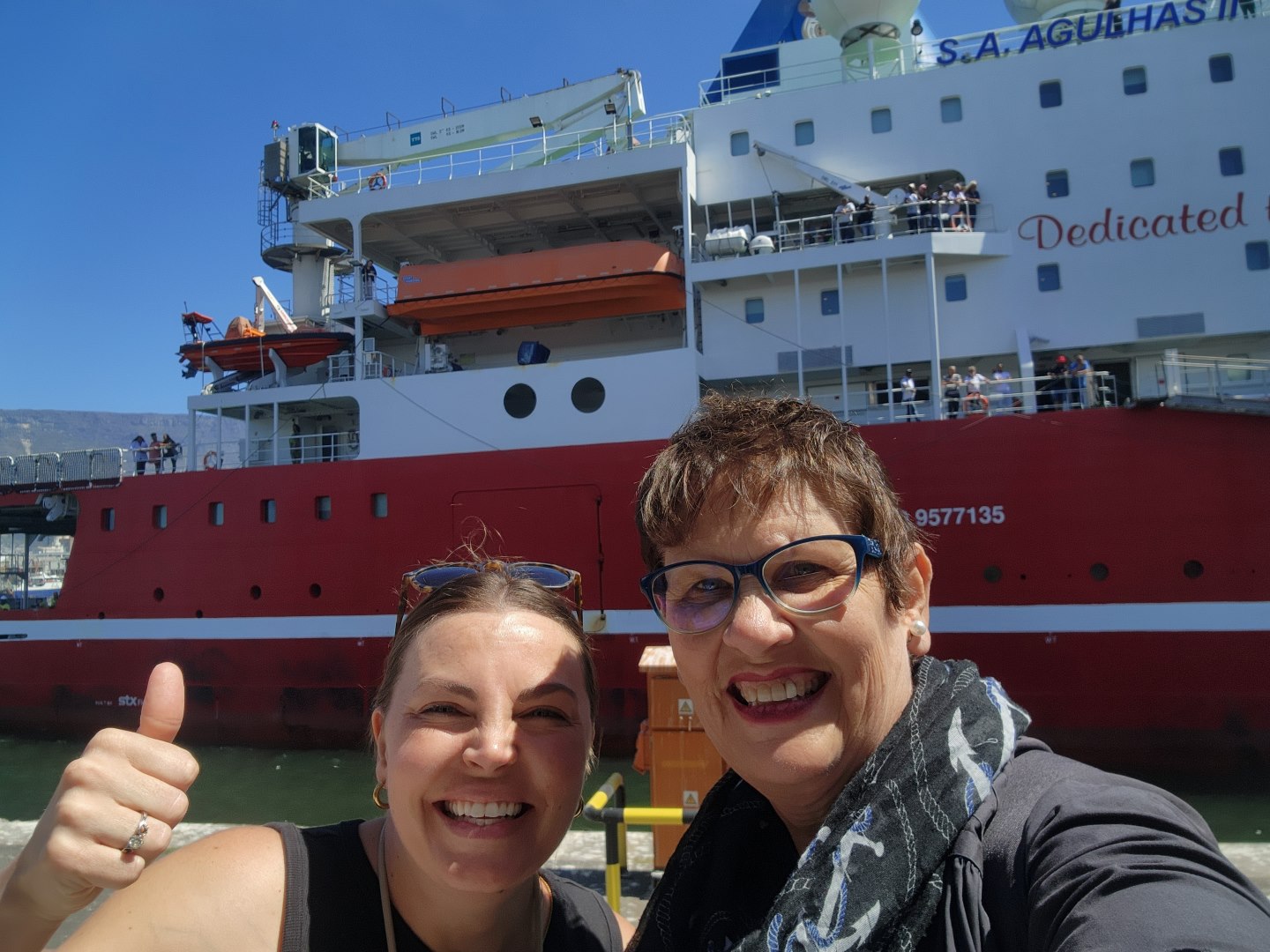 Family, friend and colleagues wait to greet everyone
Family, friend and colleagues wait to greet everyone
And then the S.A, Agulhas II arrive at East Pier with those on board
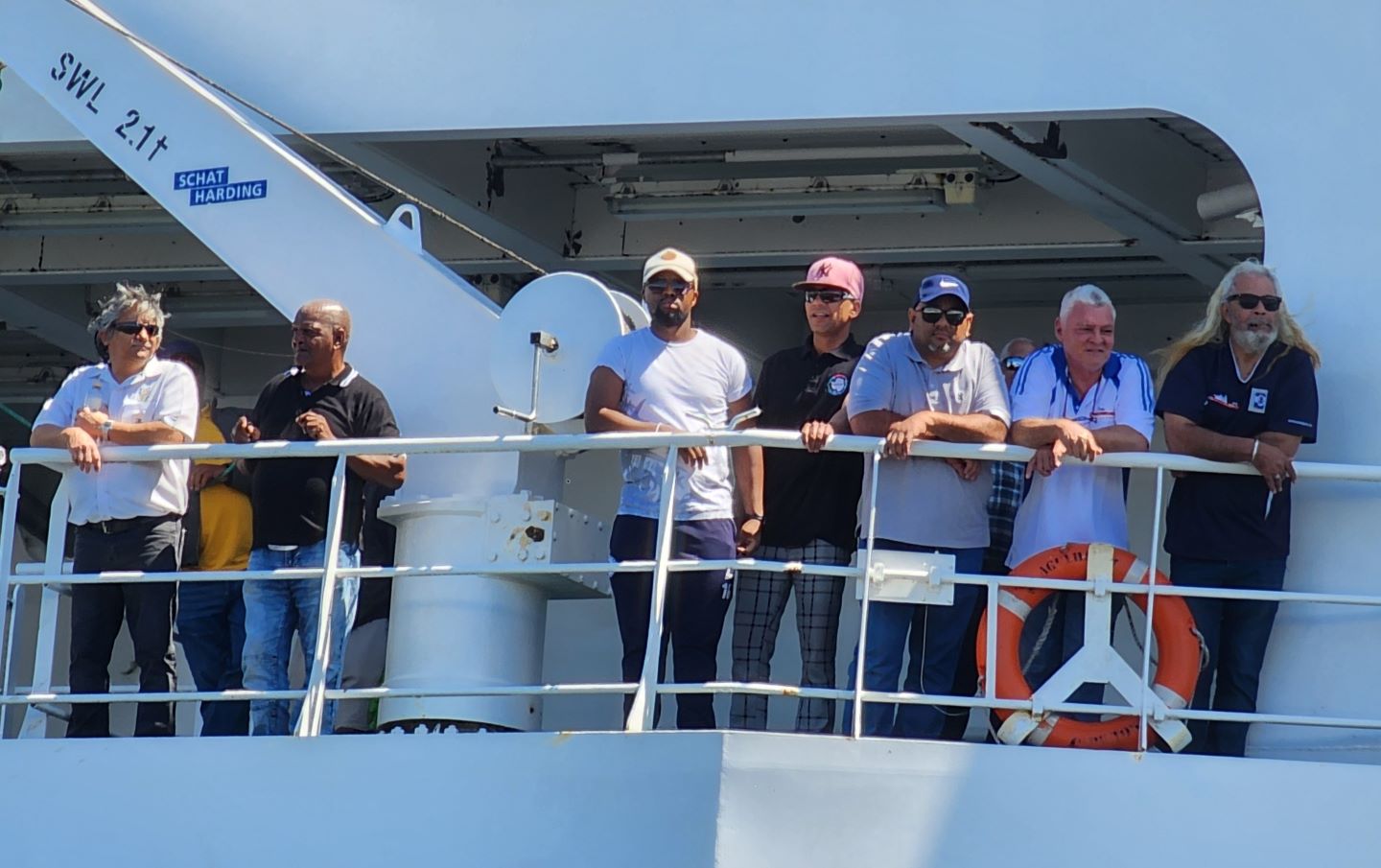
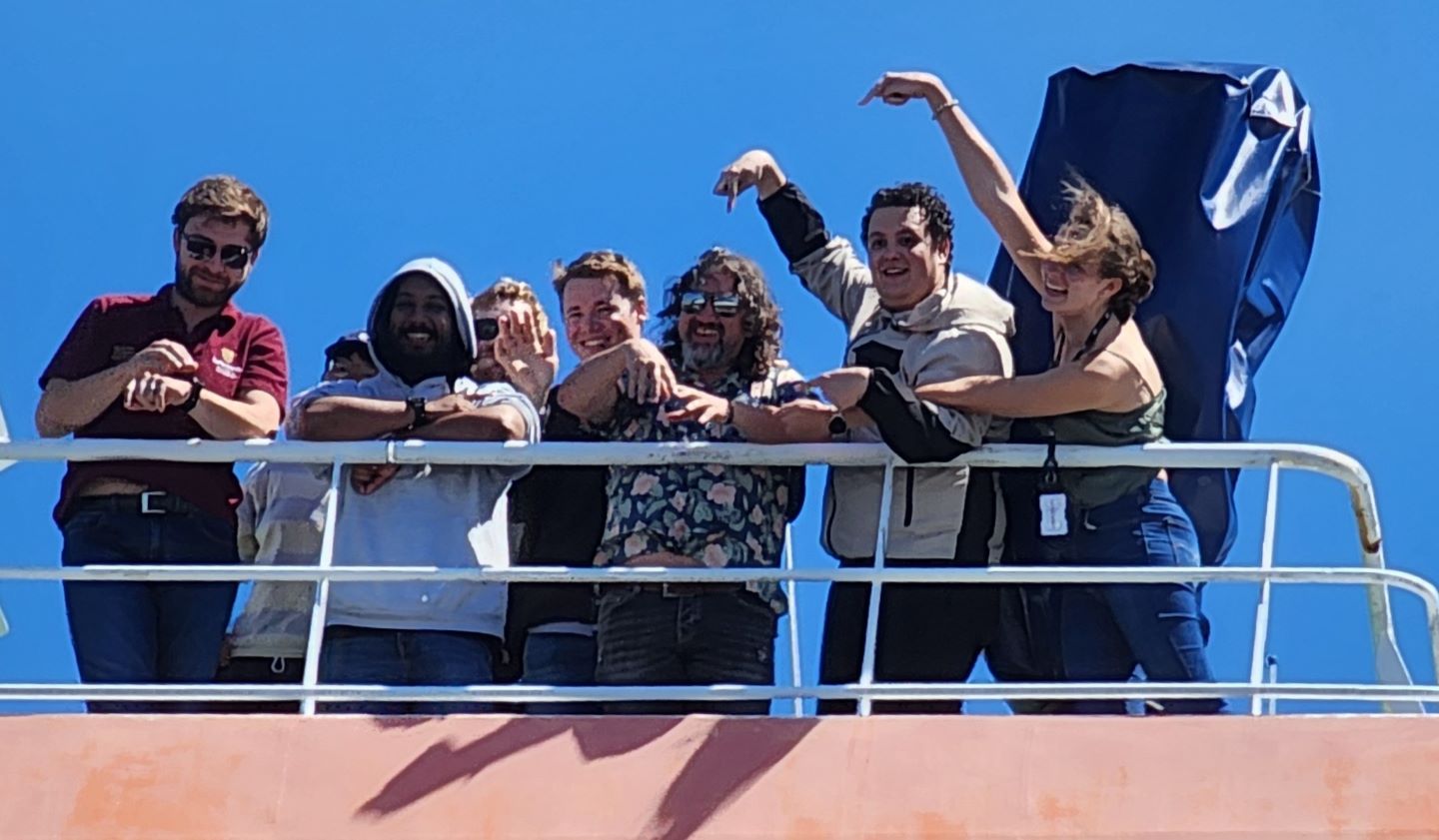
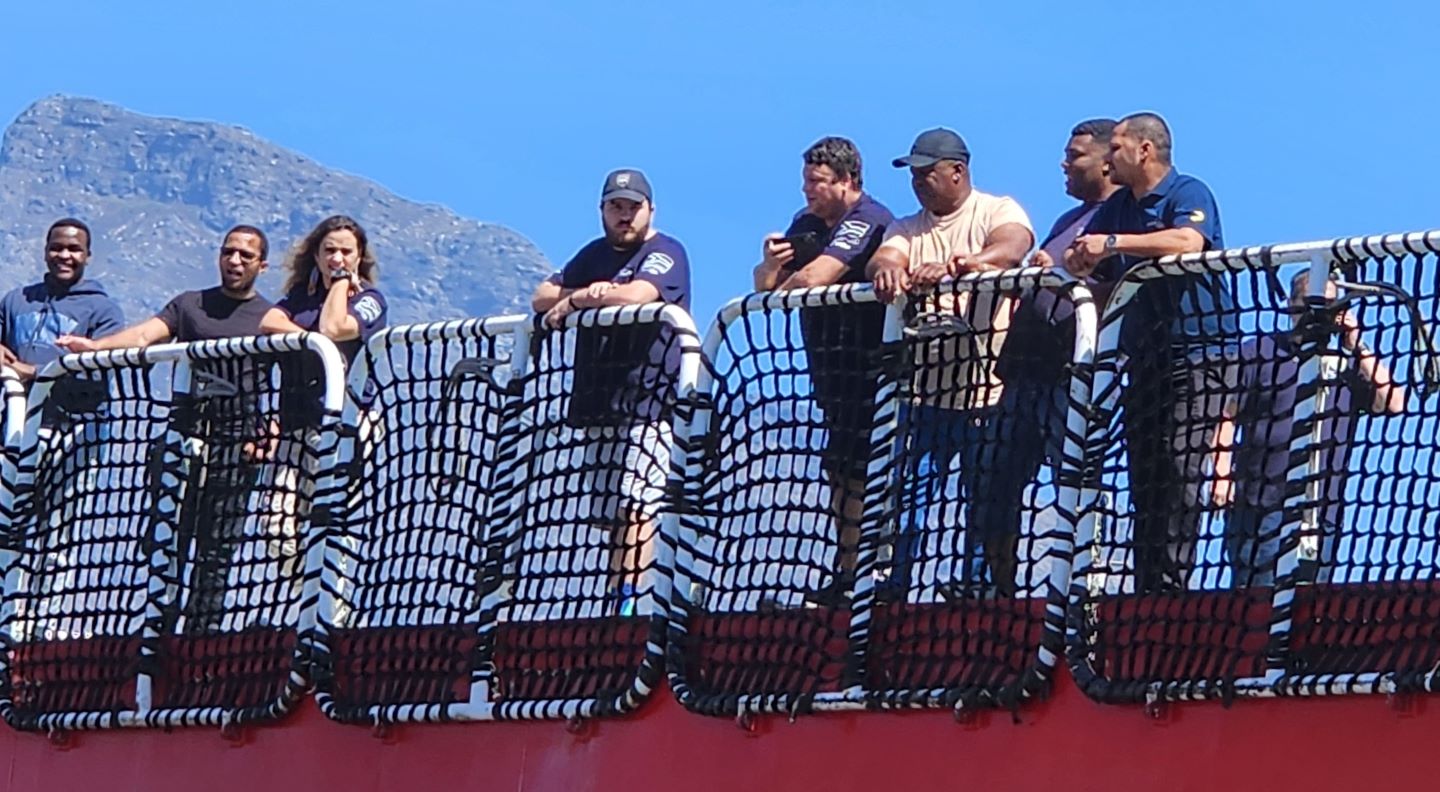
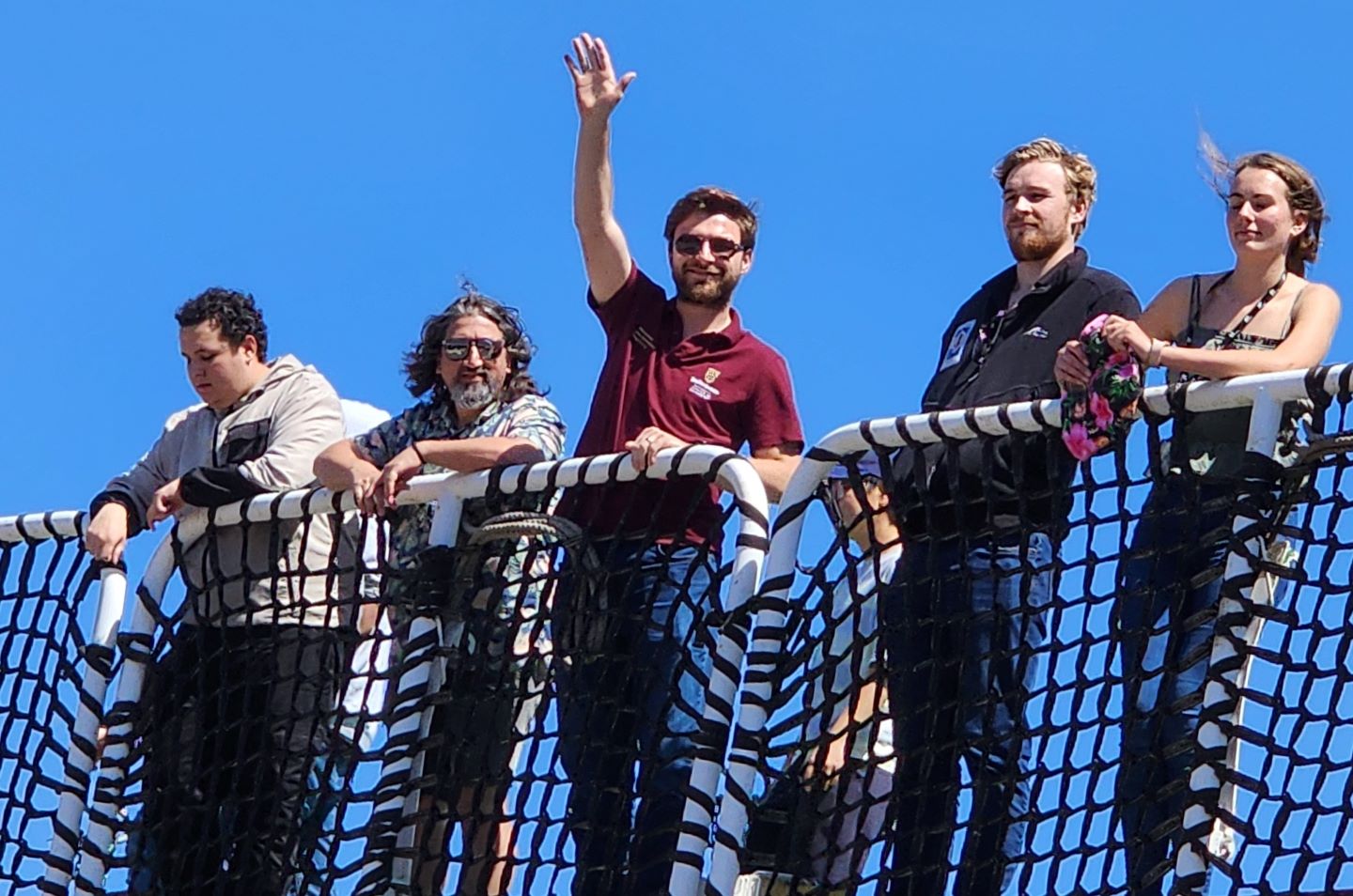
WELOME SPEECH Video Recording MEDIA INVITE
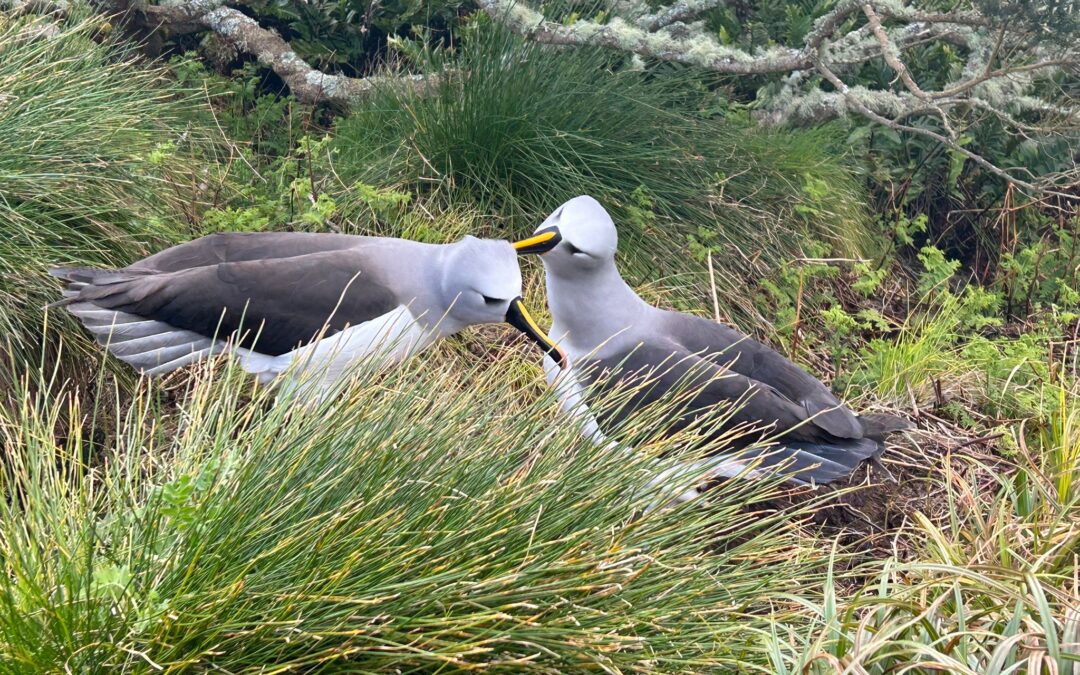
by Ria Olivier | Oct 12, 2023 | Environment, Gough Island, Invasion Biology, Mice Eradication, News, Overwintering Team, Research, Science, Take-Over Operations
The Gough Island Restoration Programme
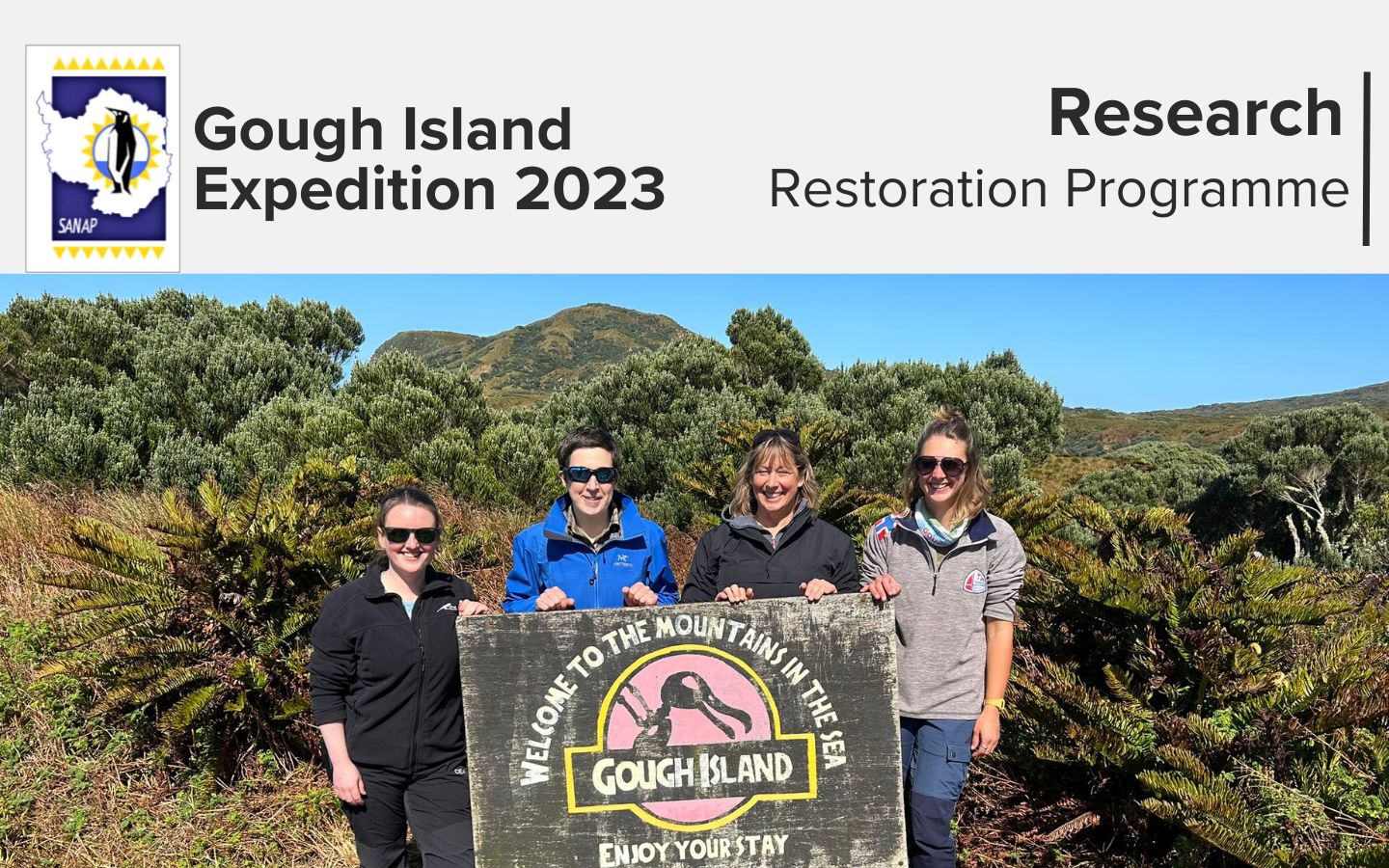
Situated in the South Atlantic Ocean, positioned equidistantly between South Africa and South America, lies a highly significant breeding ground for seabirds known as Gough Island. This remote island serves as the breeding habitat for 24 distinct avian species, many of which are found nowhere else on the planet. Regrettably, the avian inhabitants now share their home with an invasive species, specifically the house mouse. These non-native mice, introduced to the island by human activity, are causing severe harm to the island’s native wildlife, including plants and animals that have thrived there for millennia. The mice’s voracious appetite leads to the consumption of over two million seabird eggs and chicks annually, driving certain species perilously close to extinction.
In an effort to safeguard the birds, the Gough Island Restoration Programme was launched with the aim of eradicating the mice. In 2021, the Gough Island Restoration Programme attempted to eradicate mice from the island in one of the most challenging and logistically complex island eradications ever ventured.
Although the endeavor did not achieve complete success, it significantly reduced the mouse population, providing a respite for the birds. During this period, the avian inhabitants managed to successfully raise numerous chicks.
Scientists continue to monitor the birds and gather valuable information that will hopefully aid in future endeavors to eliminate the mice entirely. Part of this takeover and the overwintering field team’s work programme will relate to follow-up activities to further underpin efforts to restore Gough Island.
| Team | The Royal Society for the Protection of Birds (RSPB) |
| Project Name | The Gough Island Restoration Programme |
| Principal Investigator | Dr Antje Steinfurth |
Field Team Leader
(Gough68 & Gough69) | Dr Lucy Dorman |
| Field Officer (Gough68) | Ms Rebekah Goodwill |
| Field Officer (Gough69) | Ms Hannah Greetham |
More about the work on the island for this takeover:
“During takeover our team is carrying out a census of Tristan Albatrosses and Southern Giant Petrels across the whole island, the so-called round island survey. At this time of year, the Southern Giant Petrels are starting to breed while the Tristan Albatross chicks are about to fledge. The number of fledged Albatross chicks will then be compared to numbers of breeding pairs that were counted at the beginning of the year and so breeding success for this Critically Endangered bird can be calculated (more than 99% of the global population breed exclusively on Gough Island). The round island survey also provides the team with the opportunity to monitor the abundance and distribution of the two landbird species, the Gough Bunting and the Gough moorhen.
This takeover the team will also be taking some soil samples from the upland parts of the island. This is to help monitor the ecosystem in the wake of the mouse eradication attempt”.
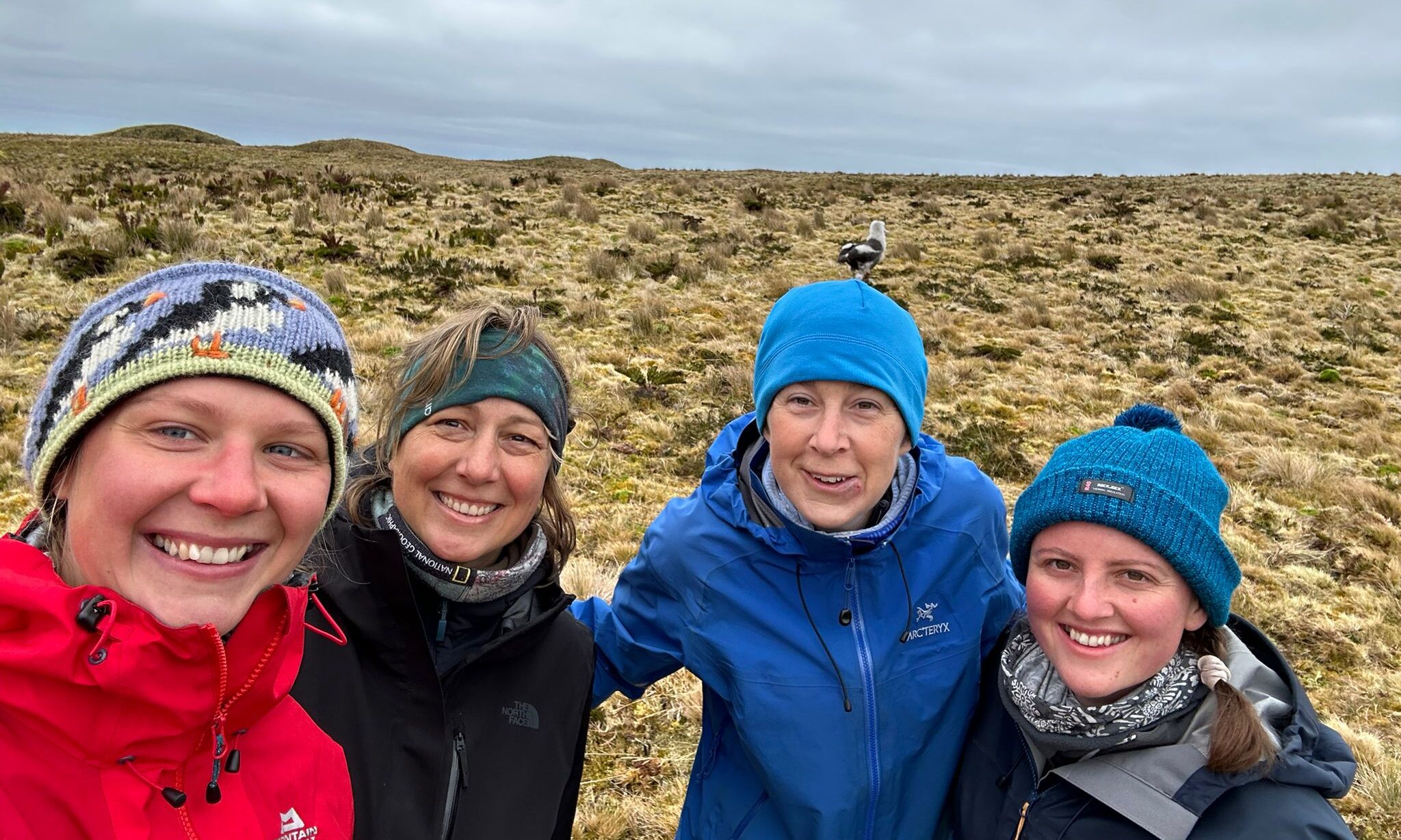
The RSPB Gough Island Restoration Programme takeover team (L-R): Hannah Greetham, Antje Steinfurth, Lucy Dorman and Rebekah Goodwill.
The RSPB overwintering team members’ work:
They will focus on Gough’s bird life, monitoring the breeding success of species, providing estimates of their populations and survival and documenting the impacts of House Mice.
For more information visit about The Gough Island Restoration Programme, click on the link below.
The Gough Island Restoration Programme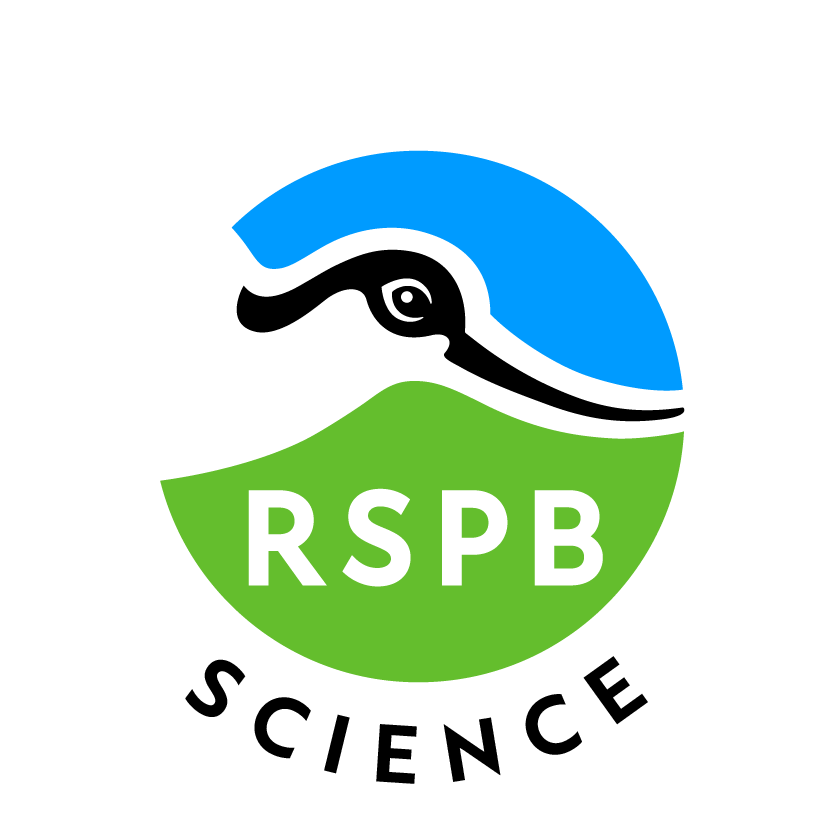 This project is funded by: The Royal Society for the Protection of Birds (RSPB).
This project is funded by: The Royal Society for the Protection of Birds (RSPB).
Project information and images supplied by Dr Antje Steinfurth.
Anche Louw, South African Polar Research Infrastructure, 12 October 2023.

by Ria Olivier | Dec 15, 2022 | Announcement, Antarctica, Legacy, News, Overwintering Team, SA Agulhas II, SANAE, SANAP, Stations, Take-Over Operations
The S.A. Agulhas II is expected to depart to Antarctica today, 15 December 2022.
The 62nd South African National Antarctic Expedition team (SANAE 62) is on board the vessel. The S62 team with be replacing the S61 team during this Antarctic relief voyage.
62nd South African National Antarctic Expedition team (SANAE 62)
Bon Voyage to all on board the S.A. Agulhas II.
Anche Louw, Antarctic Legacy of South Africa, 15 December 2022

 Every year, the South African vessel, the SA Agulhas II, embarks on a journey to Antarctica, marking the beginning of its annual research and supply voyage. This critical mission is not only a symbol of South Africa’s dedication to scientific research but also a lifeline for the overwintering team, personnel rotations, and vital logistical support for stations on the frozen continent. On the 15th of December, the SA Agulhas II departed from Cape Town, South Africa, bound for Antarctica. This voyage marks the commencement of a multifaceted operation, which encompasses research, supply deliveries, and personnel exchanges between Antarctica and the rest of the world. Left: Shiraan Watson DCO of DFFE
Every year, the South African vessel, the SA Agulhas II, embarks on a journey to Antarctica, marking the beginning of its annual research and supply voyage. This critical mission is not only a symbol of South Africa’s dedication to scientific research but also a lifeline for the overwintering team, personnel rotations, and vital logistical support for stations on the frozen continent. On the 15th of December, the SA Agulhas II departed from Cape Town, South Africa, bound for Antarctica. This voyage marks the commencement of a multifaceted operation, which encompasses research, supply deliveries, and personnel exchanges between Antarctica and the rest of the world. Left: Shiraan Watson DCO of DFFE  The SA Agulhas II plays a pivotal role in supporting research and exploration in one of the most extreme and least understood environments on Earth. South Africa’s station in Antarctica, SANAE IV Station, rely on the vessel’s annual voyages for everything from scientific supplies to food, equipment, and fuel. The vessel also delivers critical scientific personnel, scientists, and engineers who are essential for conducting experiments, research, and environmental monitoring on the frozen continent.
The SA Agulhas II plays a pivotal role in supporting research and exploration in one of the most extreme and least understood environments on Earth. South Africa’s station in Antarctica, SANAE IV Station, rely on the vessel’s annual voyages for everything from scientific supplies to food, equipment, and fuel. The vessel also delivers critical scientific personnel, scientists, and engineers who are essential for conducting experiments, research, and environmental monitoring on the frozen continent. Above: SANAE64 Overwintering Team with DFFE Takeover Personnel.
Above: SANAE64 Overwintering Team with DFFE Takeover Personnel.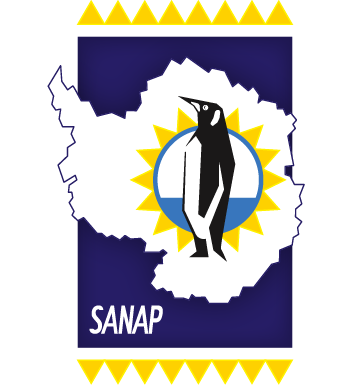

 ABOVE: Michelle Jones (M80), Vanessa Steven (M81), Prof Susie Cunningham (UCT FitzPatrick PI), Rhiannon Gill (M81), Prof Peter Ryan (UCT FitzPatrick), Chris Jones (M80)
ABOVE: Michelle Jones (M80), Vanessa Steven (M81), Prof Susie Cunningham (UCT FitzPatrick PI), Rhiannon Gill (M81), Prof Peter Ryan (UCT FitzPatrick), Chris Jones (M80)
 Above: Chris and Michelle Jones working with the Wandering Albatross during overwinter period
Above: Chris and Michelle Jones working with the Wandering Albatross during overwinter period
 (left) Michelle Jones with Grey-headed Albatross and (right) Chris Jones with Common Diving Petrel
(left) Michelle Jones with Grey-headed Albatross and (right) Chris Jones with Common Diving Petrel
 (Above: Azorella selago – left: intact, right: eaten by mice)
(Above: Azorella selago – left: intact, right: eaten by mice)
 (Above: Elmar van Rooyen and Rabia Mathakutha. Left: before departure. Right: On board S.A.Agulhas II with Marion Island in the back)
(Above: Elmar van Rooyen and Rabia Mathakutha. Left: before departure. Right: On board S.A.Agulhas II with Marion Island in the back) Allow me to introduce myself briefly. I am a 29-year-old conservation ecologist with a profound passion for nature and exploration. I hold an M.Sc. degree in Conservation Ecology & Entomology and possess a diverse skill set that includes expertise in ecology, restoration ecology, horticulture, botany, entomology, education, and management. Throughout my career, my focus has predominantly been on Southern Afrotemperate forests, and I have accumulated significant experience in South African forest ecology. I am drawn to this expedition for several reasons. Foremost, the opportunity to explore the unique environment of Marion Island presents a once-in-a-lifetime chance for me to expand my knowledge and understanding of sub-Antarctic ecosystems. While I may not have prior experience with the island, I firmly believe that firsthand experience is the most effective way to comprehend its ecology and wildlife. Moreover, I am deeply committed to the conservation of natural habitats, and Marion Island’s status as a biodiversity hotspot underscores the urgency of our research efforts. The presence of invasive house mice poses a significant threat to the island’s flora and fauna, necessitating thorough investigation and potential eradication strategies. Additionally, I am eager to contribute to studies on the impact of alien plant species and assist in devising methods for their control. I have always had a profound appreciation for fieldwork, and I relish the opportunity to immerse myself in hands-on research once again. Marion Island’s rugged terrain and unique challenges excite me, and I am prepared to tackle them head-on in the pursuit of conservation objectives.
Allow me to introduce myself briefly. I am a 29-year-old conservation ecologist with a profound passion for nature and exploration. I hold an M.Sc. degree in Conservation Ecology & Entomology and possess a diverse skill set that includes expertise in ecology, restoration ecology, horticulture, botany, entomology, education, and management. Throughout my career, my focus has predominantly been on Southern Afrotemperate forests, and I have accumulated significant experience in South African forest ecology. I am drawn to this expedition for several reasons. Foremost, the opportunity to explore the unique environment of Marion Island presents a once-in-a-lifetime chance for me to expand my knowledge and understanding of sub-Antarctic ecosystems. While I may not have prior experience with the island, I firmly believe that firsthand experience is the most effective way to comprehend its ecology and wildlife. Moreover, I am deeply committed to the conservation of natural habitats, and Marion Island’s status as a biodiversity hotspot underscores the urgency of our research efforts. The presence of invasive house mice poses a significant threat to the island’s flora and fauna, necessitating thorough investigation and potential eradication strategies. Additionally, I am eager to contribute to studies on the impact of alien plant species and assist in devising methods for their control. I have always had a profound appreciation for fieldwork, and I relish the opportunity to immerse myself in hands-on research once again. Marion Island’s rugged terrain and unique challenges excite me, and I am prepared to tackle them head-on in the pursuit of conservation objectives. Rabia is excited to participate in the 2024 Marion Island Relief Expedition. Rabia is an ecologist by training and will be working as part of the University of Pretoria research team towards a comprehensive understanding of impacts of the invasive house mouse on the terrestrial biodiversity of Marion Island. Rabia first visited the island as part of her Masters research project during the 2015 and 2016 relief expeditions. Rabia’s MSc in Plant Science was focused on understanding plant invasion potential and environmental change responses in the sub-Antarctic region, using Marion Island as a case study. This is when her passion for understanding and participating in the conservation of South Africa’s polar environment was ignited. In her current capacity, Rabia is a research coordinator for the Data, Products and Society (DPS) Integrated Facility of the South African Polar Research Infrastructure (SAPRI). She continues to support the polar research environment by ensuring coordinated access to research infrastructure and societal benefits through science engagement and science communication. Rabia views this chance to revisit the island as a once-in-a-lifetime opportunity, one that will not only build upon previous efforts in understanding plant dynamics but also advance our understanding of ecological processes in response to a threatening invader. There’s no better place to study this than Marion Island, our own natural laboratory, and where it’s most urgently needed. As part of the larger Mouse-Free Marion project, Rabia considers this as a significant contribution to global conservation efforts, and in her words, “saving the world!”.
Rabia is excited to participate in the 2024 Marion Island Relief Expedition. Rabia is an ecologist by training and will be working as part of the University of Pretoria research team towards a comprehensive understanding of impacts of the invasive house mouse on the terrestrial biodiversity of Marion Island. Rabia first visited the island as part of her Masters research project during the 2015 and 2016 relief expeditions. Rabia’s MSc in Plant Science was focused on understanding plant invasion potential and environmental change responses in the sub-Antarctic region, using Marion Island as a case study. This is when her passion for understanding and participating in the conservation of South Africa’s polar environment was ignited. In her current capacity, Rabia is a research coordinator for the Data, Products and Society (DPS) Integrated Facility of the South African Polar Research Infrastructure (SAPRI). She continues to support the polar research environment by ensuring coordinated access to research infrastructure and societal benefits through science engagement and science communication. Rabia views this chance to revisit the island as a once-in-a-lifetime opportunity, one that will not only build upon previous efforts in understanding plant dynamics but also advance our understanding of ecological processes in response to a threatening invader. There’s no better place to study this than Marion Island, our own natural laboratory, and where it’s most urgently needed. As part of the larger Mouse-Free Marion project, Rabia considers this as a significant contribution to global conservation efforts, and in her words, “saving the world!”.
 It was a great event to welcome back the SANAE62 overwintering team after they spent more than a year at Antarctica. Dr Aby Paton(front 3rd form left), medical doctor of the team did not return as she will be staying on at SANAEIV as team leader and medical doctor for SANAE63.
It was a great event to welcome back the SANAE62 overwintering team after they spent more than a year at Antarctica. Dr Aby Paton(front 3rd form left), medical doctor of the team did not return as she will be staying on at SANAEIV as team leader and medical doctor for SANAE63.
 The event was organised by Ms Chuma Phamoli, Director of
The event was organised by Ms Chuma Phamoli, Director of 

 DFFE preparations for welcoming ceremony(image left). Zaid Watson and Mawonga Mandleni provided entertainment while everyone was waiting (image right)
DFFE preparations for welcoming ceremony(image left). Zaid Watson and Mawonga Mandleni provided entertainment while everyone was waiting (image right)

 Family, friend and colleagues wait to greet everyone
Family, friend and colleagues wait to greet everyone









